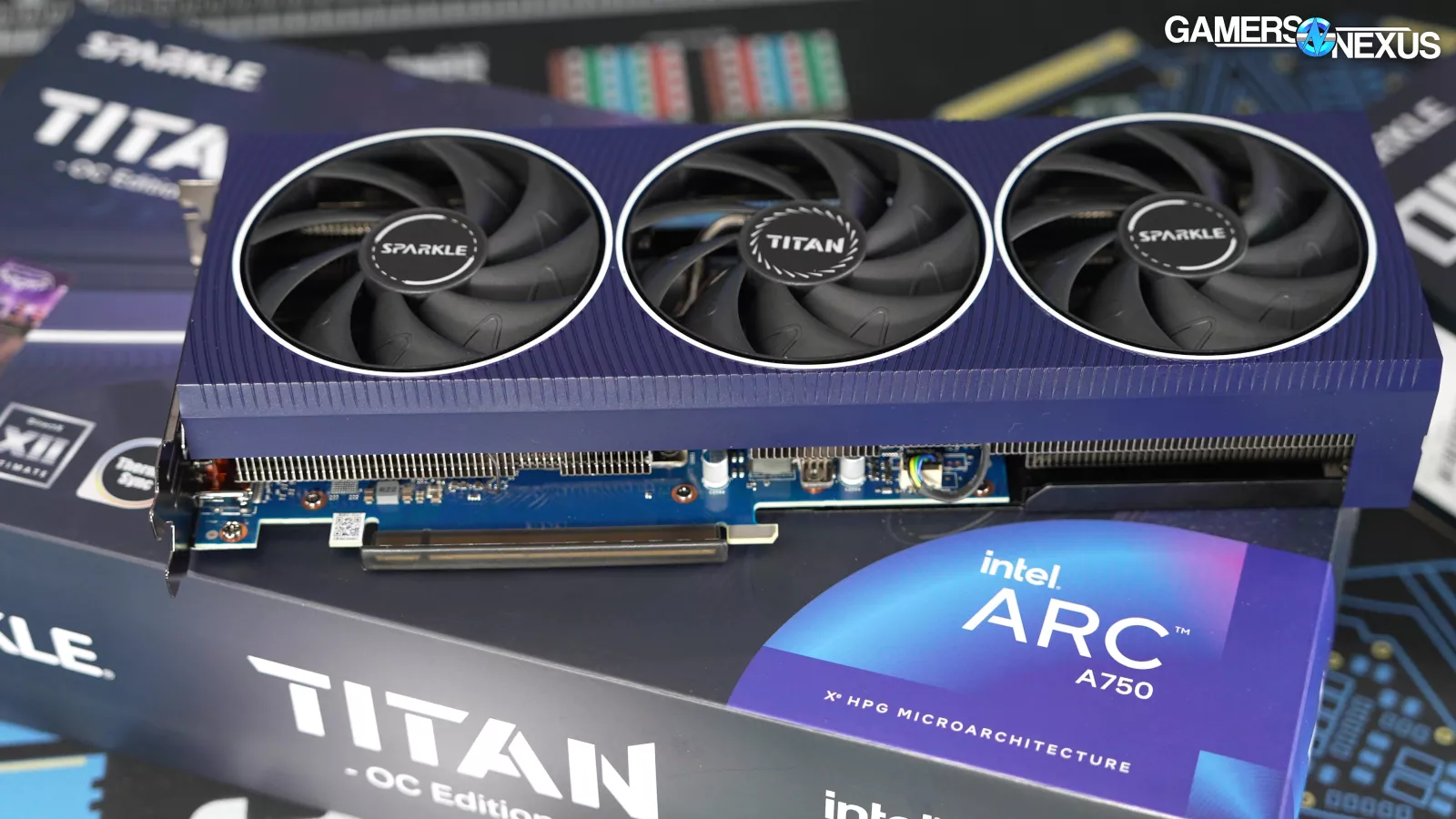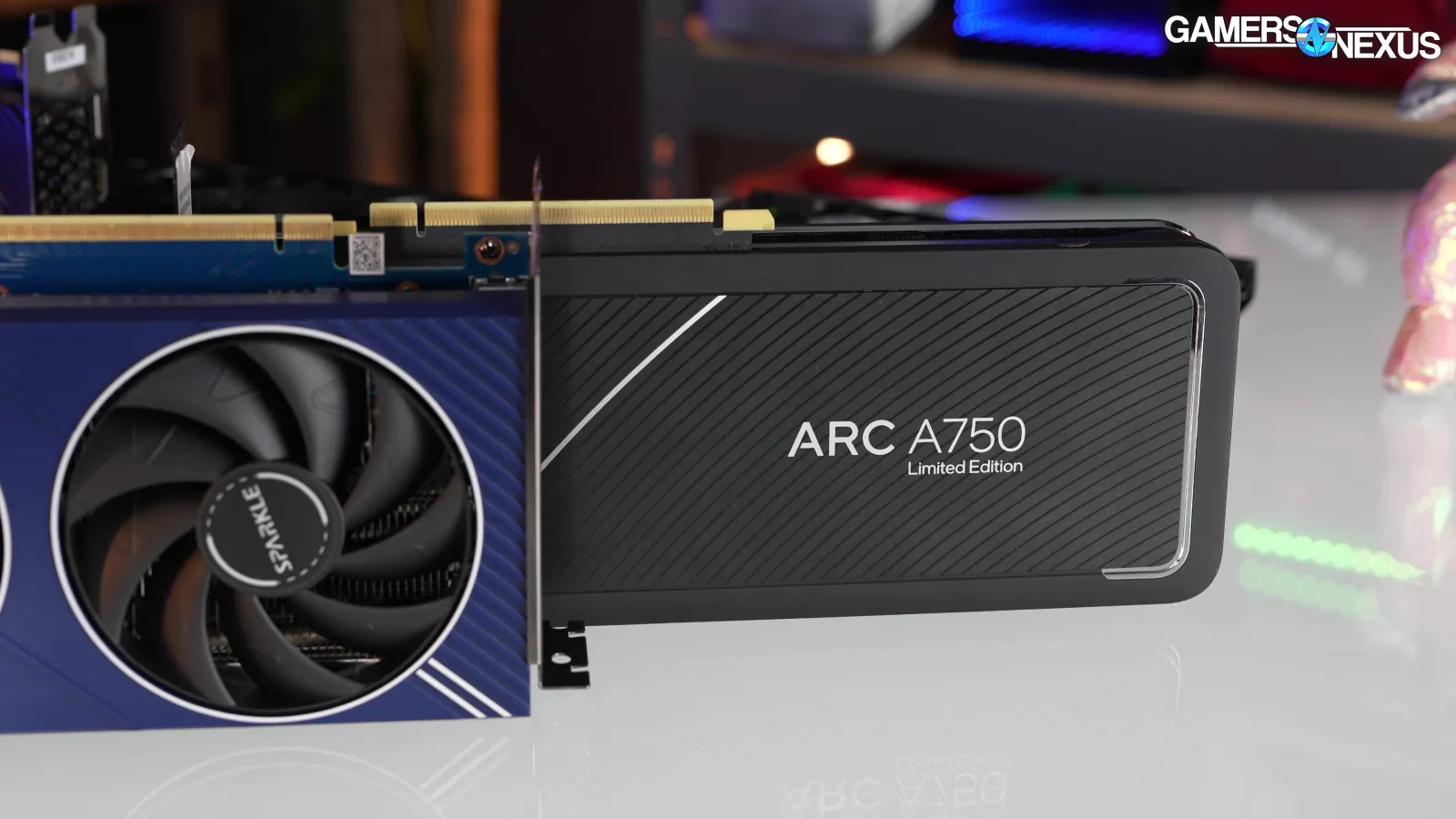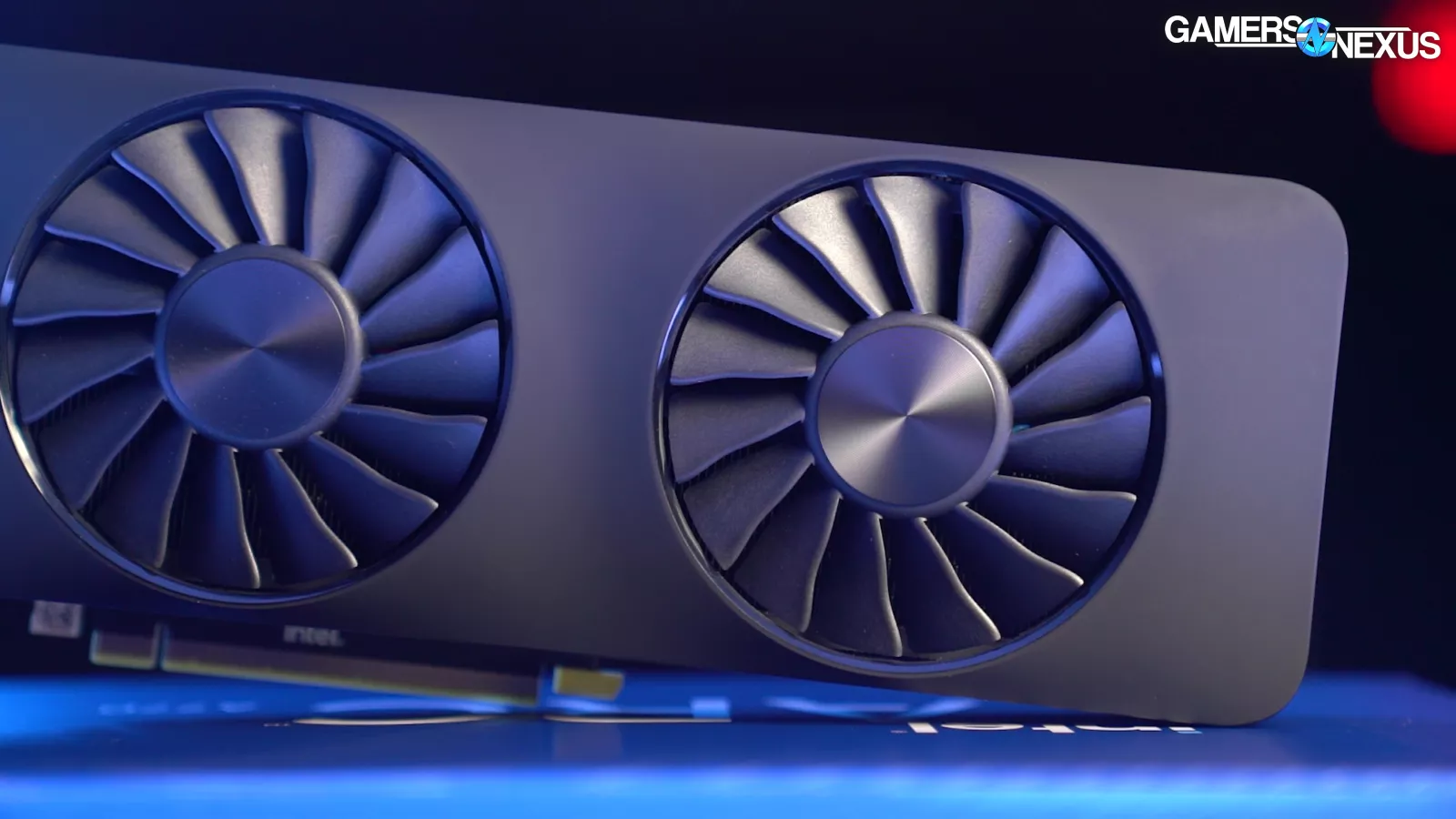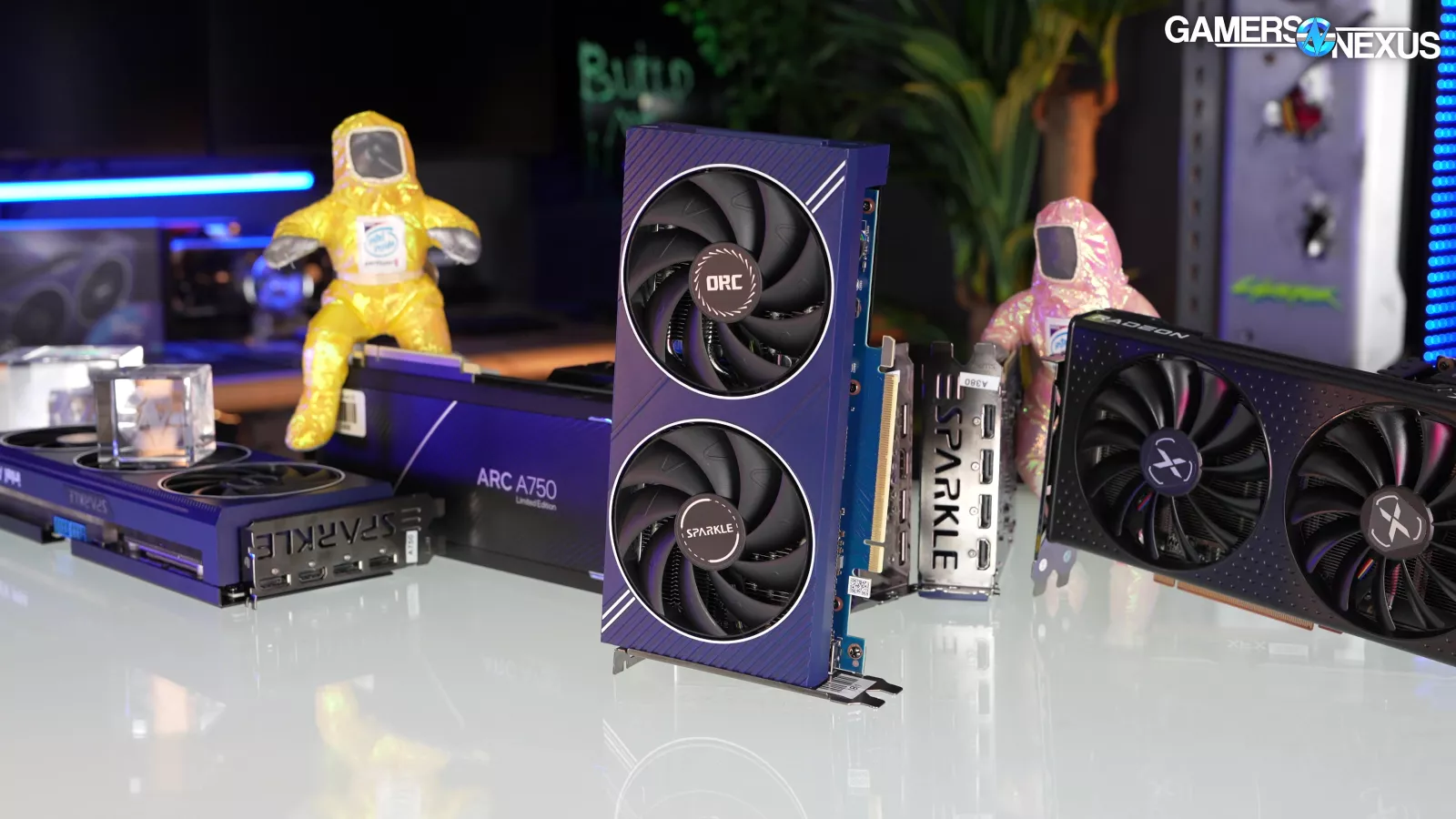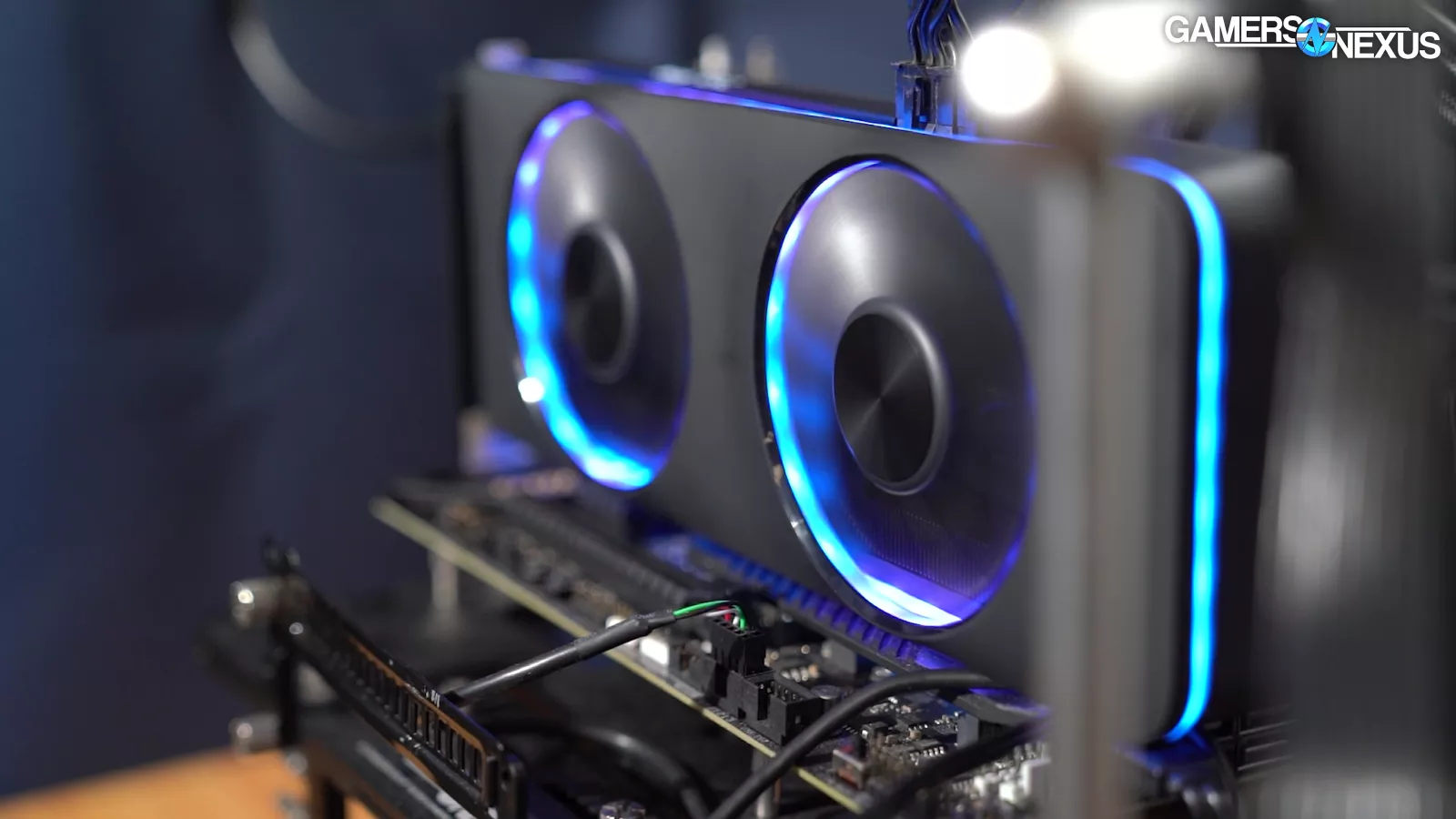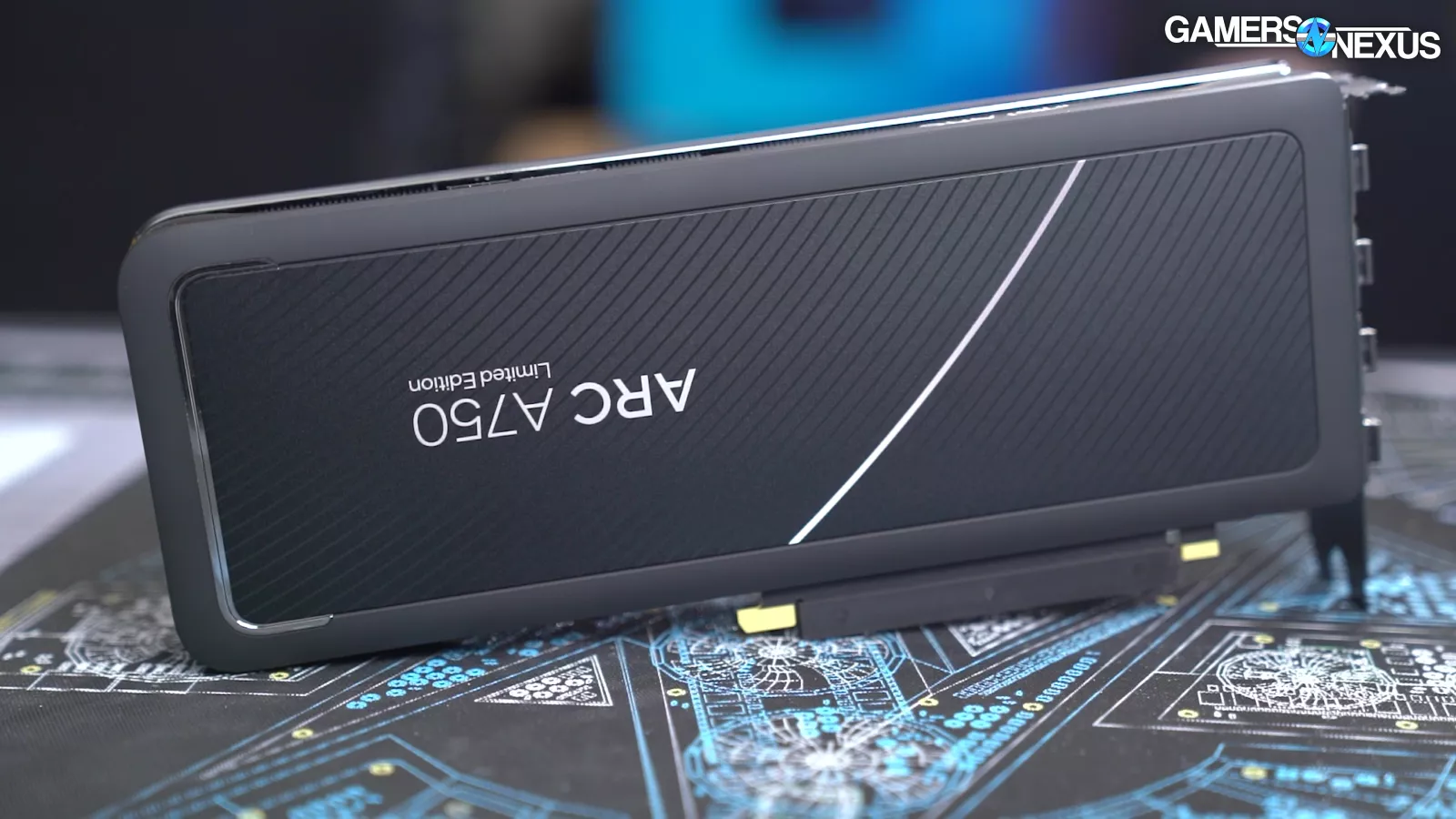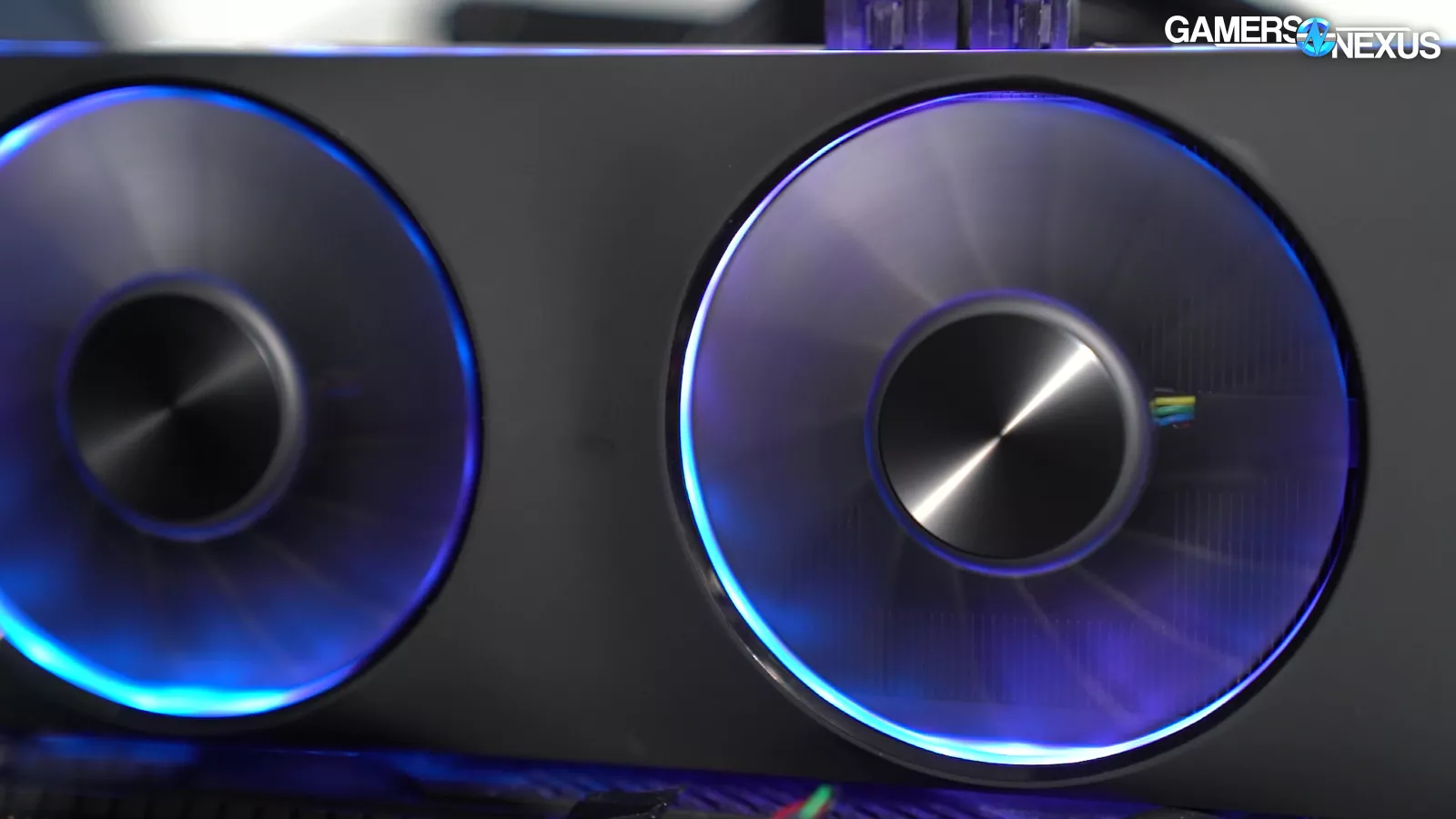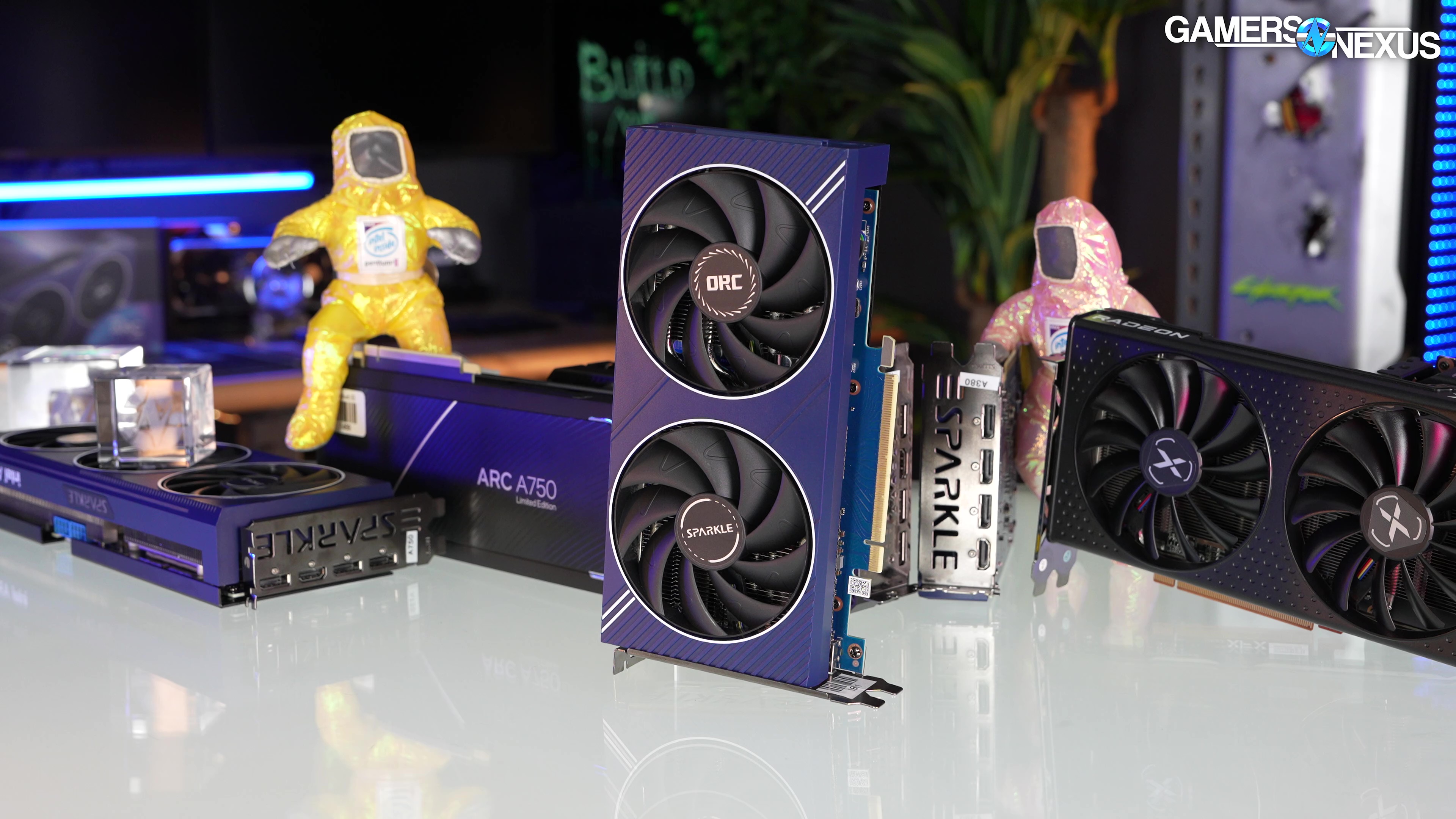
Intel Arc 2024 Revisit & Benchmarks (A750, A770, A580, A380 Updated GPU Tests)
February 20, 2024
Last Updated: 2024-02-20
We put Intel’s Arc driver improvements through a series of rasterization and ray tracing benchmarks
The Highlights
- Intel Arc cards tend to have the advantage over equivalent AMD GPUs in ray tracing but still lag behind NVIDIA
- Arc cards still had major performance issues in GTA V and Starfield
- Intel has made great strides to improve its Arc drivers, making its GPUs a great value…when they work
Table of Contents
- AutoTOC

Intro
When Intel Arc launched, we spoke with respected technical analyst David Kanter. He said, “Intel doesn’t have to be number one. It just has to be second place. Intel won’t take market share from NVIDIA; it’s going to take it from AMD.”
And he was absolutely right. Intel Arc is competing in the budget market right now. NVIDIA doesn’t compete there, and that’s something an NVIDIA employee told us many years ago, “We don’t compete on price. We compete on quality.”
But AMD does compete on price, and that’s been their strongest position against NVIDIA. Today, Intel is threatening that position.
Editor's note: This was originally published on February 18, 2024 as a video. This content has been adapted to written format for this article and is unchanged from the original publication.
Credits
Test Lead, Host, Writing
Steve Burke
Testing
Patrick Lathan
Mike Gaglione
Video Editing
Vitalii Makhnovets
Web Editing
Jimmy Thang
The launch of Arc was abysmal, though, and our immediate concerns were that Intel would kill the project before it could fix its drivers.
But our early conclusions were that, when it worked, the hardware was competitive -- it’s just the “when it worked” part that made it impossible to recommend.
That has slowly been shifting. Today, we’re revisiting Intel Arc again -- now going on almost 2 years later -- to see how it’s improved from driver updates alone. There aren’t any hardware changes here, so Intel’s newly established positioning has been gained purely from driver and software updates. This huge list of patch notes we’re showing is just one of the two most recent drivers -- and Intel has published similarly sized updates for over a year now.
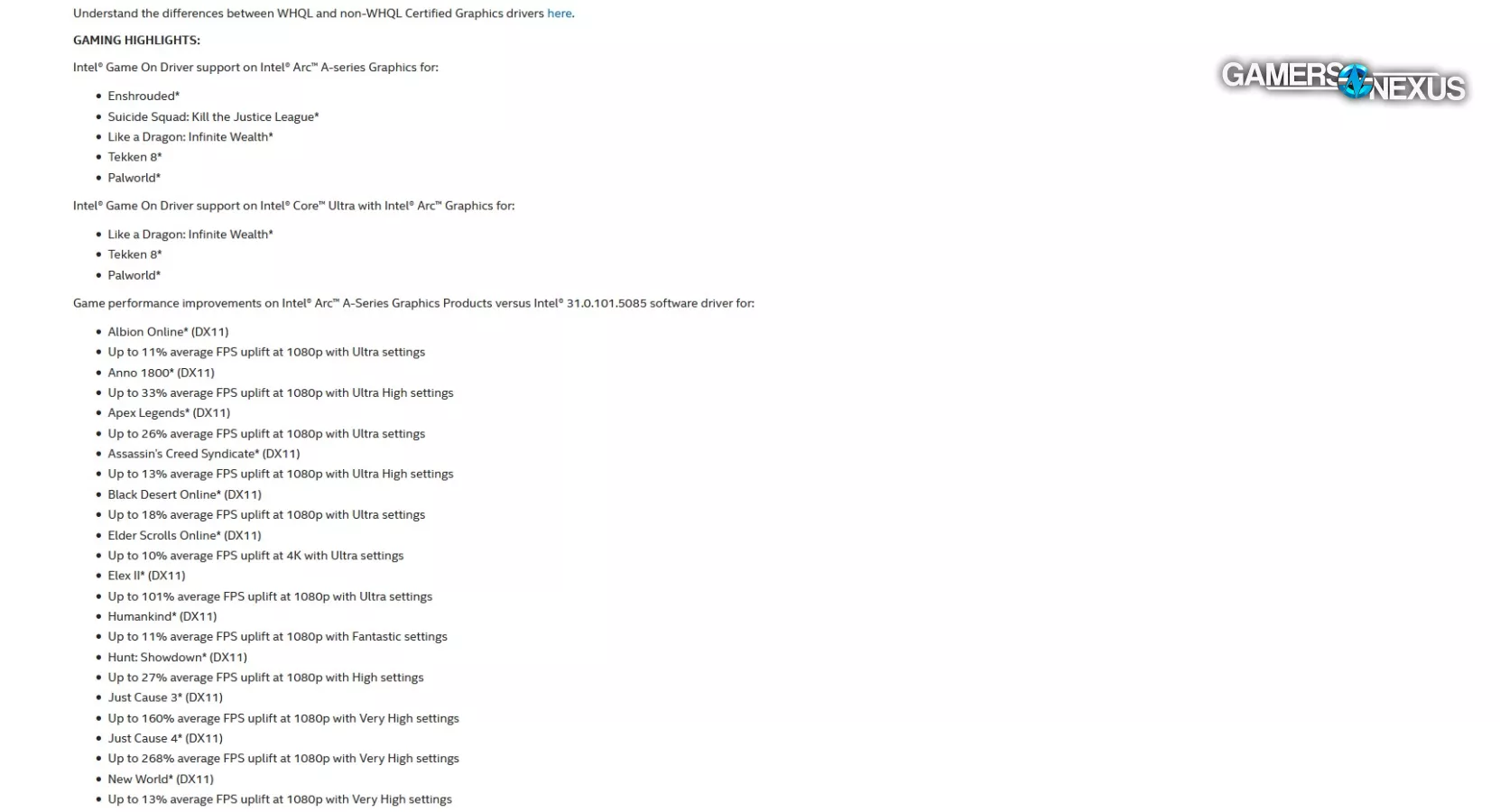
That’s dangerous for AMD and NVIDIA when they compete in a similar price class, because AMD and NVIDIA’s drivers are so impressively mature and established already that there’s little extra juice to squeeze out of driver updates.
We think AMD is the most threatened in the market right now. It’s competing stronger, almost oddly, at the 7900 XT price class than at the $200-$300 mark, and that’s despite NVIDIA nearly abandoning it.
Overview
Today’s testing will be focused on overall driver updates and performance improvements for Intel Arc GPUs. We’re testing with the latest 5252 drivers that are supposed to further bolster performance in several games, but this was preceded by the 5234 drivers that offered a huge list of Dx11 improvements and some Dx12 improvements.
The article will be a mix of benchmarks and some commentary in the conclusion. Intel Arc is a rapidly changing beast, which means it needs more frequent revisits to ensure we’re all up to date on the status of the devices. What we’ve learned thus far is that drivers may be harder to make than hardware, in some ways, or at least from the perspective of the millions of combinations of software and hardware that drivers must address.
Pricing Update
With some quick browsing, here’s the update on the relevant part of the market.
The Intel Arc A770 16GB model, which is what we’re testing, is typically around $290 to $300. The A750 has its cheapest entry at $205, a Sparkle variant that we tested at $210, and plenty of others in the $220 range. The A750 has been the card we’ve tended to recommend most out of Intel’s lineup. The A580 is priced at $165 at the lowest, with other options at $180. The A380 is priced at around $120 these days, with the A310 -- the only card not tested today since it’s too low-end for these tests -- at around $90 to $110.
For competition, the RTX 4060 is NVIDIA’s cheapest 40-series card, priced at around $300 to $320. The RTX 4060 Ti 8GB is still around $400 and is in a substantially different price class from Intel’s options. The RTX 3050 is around $250 these days for the 8GB model and will underperform every single one of these cards we’ve mentioned except the A380, and the 3050 6GB isn’t worth mentioning. There’s also the 3060 at $285. For AMD, it’s mostly the RX 7600 at $260, the RX 7600 XT at $330, and the RX 6600 at $200, with the 6600 XT at $240 and 6650 XT at $250. The 6600 series cards are the most relevant from AMD for price-to-performance.
There’s a surprising amount of cards in this price class, but most of them are from Intel and AMD right now. NVIDIA only has one modern option anywhere close, with the rest from last generation. The 3050 6GB technically just launched, but it’s not really a competitor here with its core count cut-down and clock drop.
For the charts today, we’re removing the RTX 4080 and Super, the 4090, and 7900 XTX to make space for the lower end of the stack. Check the 4080 Super review for the high-end. We’ve also just published article versions of the 4070 Super and 4070 Ti Super reviews. Our site is all entirely funded by our community, so to support our ad-free written reviews and archival of our videos in an easily searchable format, head over to store.gamersnexus.net and please consider grabbing one of our comfortable T-shirts with PC component designs, our silicone soldering and project mats with extreme heat resistance, or our tear-down toolkits with 10 distinct PC building tools that we’ve carefully chosen and designed for video card disassembly and reassembly, like for re-pasting.
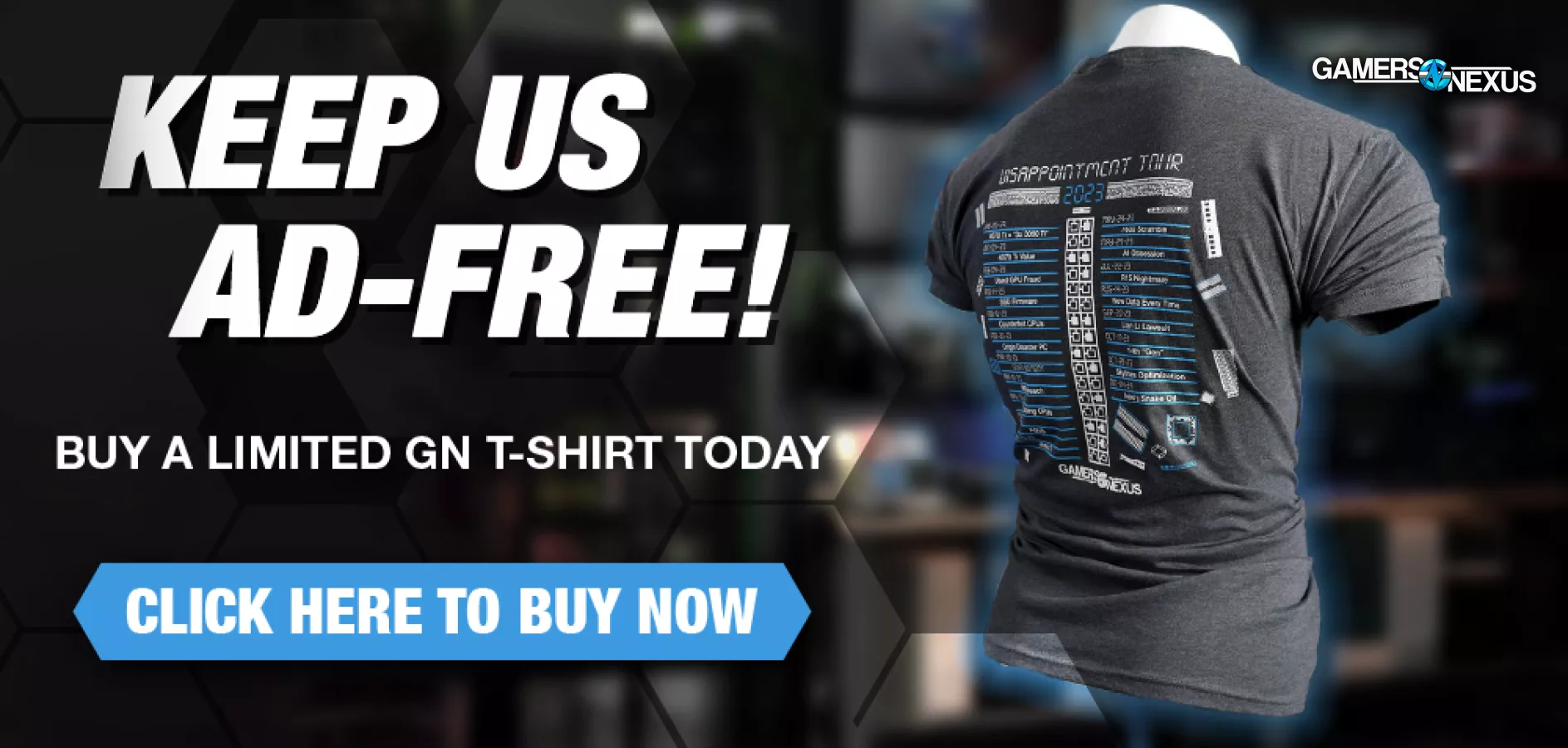
Let’s get into the testing.
GPU Reviews Test Bench
You can find additional test methodology notes in our Test Benches Living Document.
| Part | Component | Provided By |
| CPU | Intel Core i7-12700KF Overclocked (4.9GHz P-Cores, 3.9GHz E-Cores) | Bought by GN |
| Motherboard | MSI Z690 Unify | MSI |
| RAM | DDR5-6000 G.Skill Trident Z (manually tightened timings) | G.Skill |
| Cooler | Arctic Liquid Freezer II 360 @ 100% Fan Speed | Bought by GN |
| PSU | EVGA 1600W T2 Supernova Corsair AX1600i | EVGA Corsair |
| OS | Windows 11 | Bought by GN |
Intel Arc Rasterization Game Benchmarks
Resident Evil 4
1080p Benchmarks
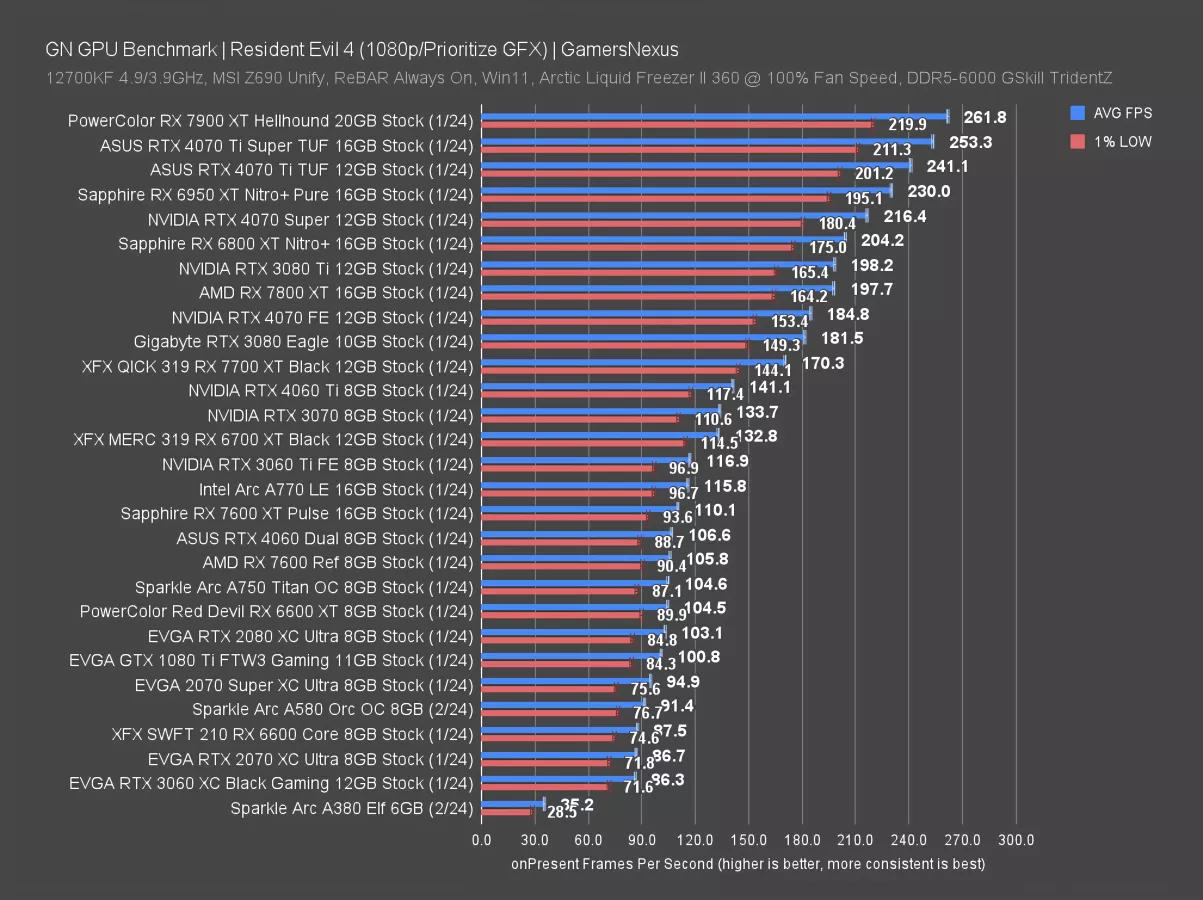
Resident Evil 4 had the Intel A750 at 104-105 FPS AVG, which has it about tied with the RX 6600 XT and RX 7600 GPUs. That’s a great place for the A750 to be, and at a lower price than the RX 7600 (watch our review), it’s also competitive. The A770 pushes up to 116 FPS AVG, leading the brand new, freshly launched $330 RX 7600 XT (watch our review) by 5.2% while costing $40 less.
As for NVIDIA, its last-gen 3060 Ti is about equal, while the new RTX 4060 -- about $10 more than the A770 -- falls behind in this chart. That’s remarkable comparative performance for Intel.
For the A580, we saw a 91 FPS AVG that ranked it between the RX 6600 (watch our review) -- currently still available for $190-$200 -- and RTX 2070 Super (watch our review). It’s not distant from the GOATed 1080 Ti (watch our review).
At $165 to $180, the A580 (watch our review) is outperforming the RX 6600 (watch our review) in both average FPS and lows while costing less.
Finally, the A380 (watch our review) is predictably at the bottom of the chart: It’s the lowest end card we’ve tested recently, so we’d need to add the GT 1030 (watch our review) or GTX 1650 (watch our review) class cards to compare closer. At about $120, it can at least somewhat play games with dropped settings. The A580 is about 160% better for just 38% more money, though.
1440p Benchmarks
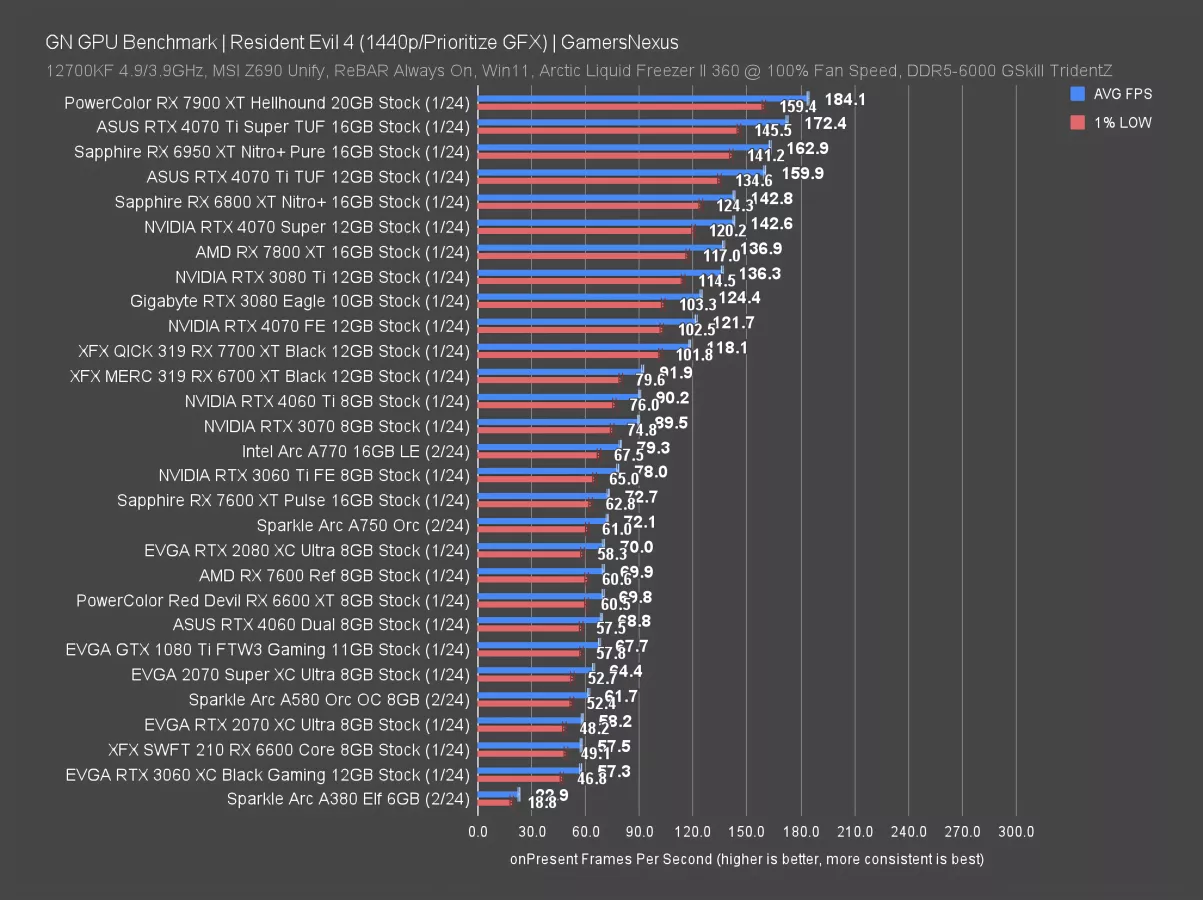
At 1440p, the A750 and A770 (watch our revisit) remain in completely playable territory despite the increase in graphics strain. The A580 is also in playable territory, although depending on preferences, maybe just barely. The A380 predictably can’t handle this.
The important comparisons go like this: The A750 runs at about 72FPS AVG, tied with the brand new, significantly more expensive RX 7600 XT, which falls in relative position in this test from increased pixel processing load. That means the RX 7600 XT is 57% more expensive than the A750 for equivalent performance. Yikes. The RX 7600 is also functionally tied but still costs more.
As for NVIDIA, the RTX 4060 allows Intel a lead of almost 5%, but Intel maintains the cost advantage.
The A580 also punches above its weight class, landing at 62FPS AVG and leading the RX 6600 by 7%.
Finally, the A770 leads the 7600 XT by about 9%, with the 4060 Ti leading the A770 more notably at about 14%.
4K Benchmarks
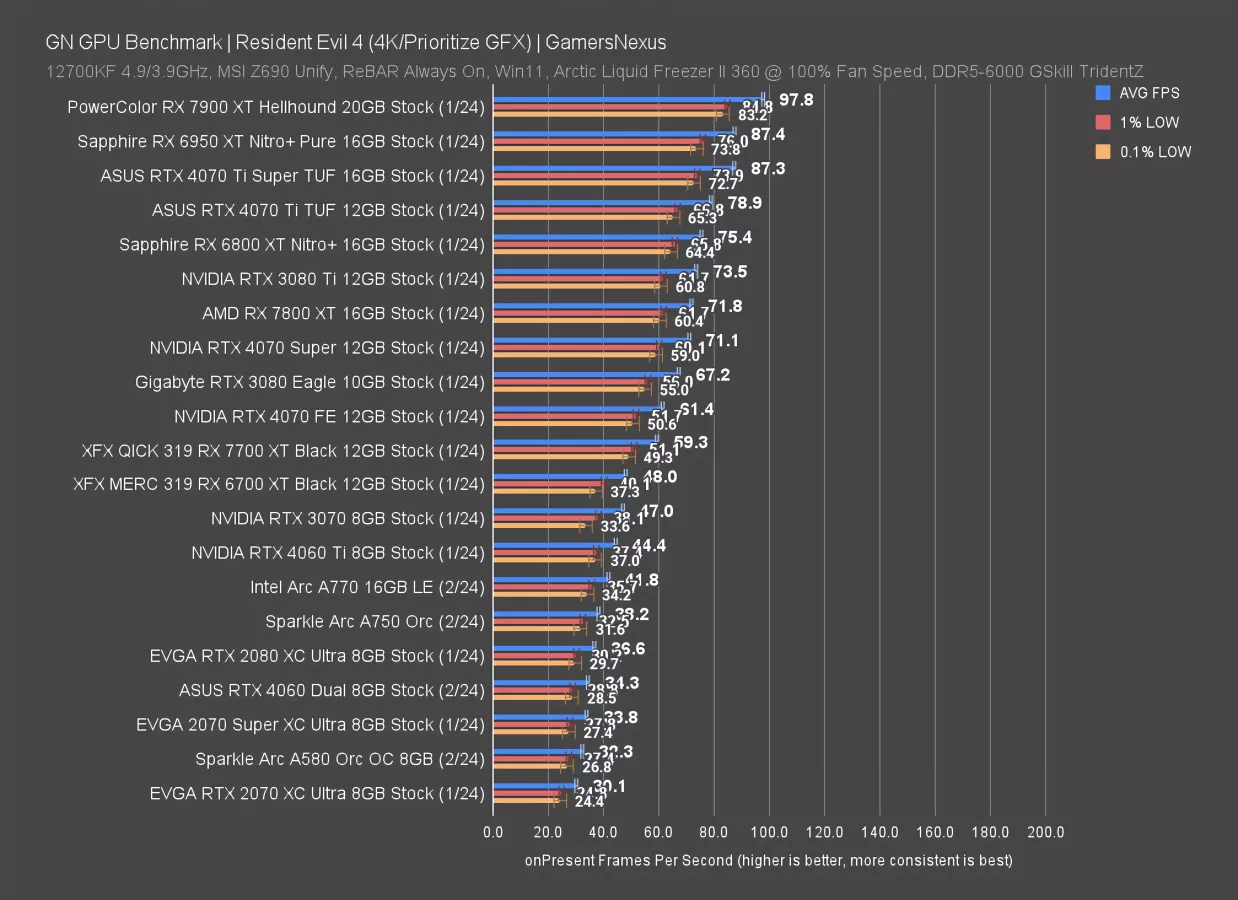
At 4K, the A770 doesn’t quite make it to playable territory without upscaling assistance or lower settings. Comparatively, it is now about equal to the 4060 Ti -- which has shifted down due to weaknesses in memory bandwidth.
Rainbow Six Siege
4K Benchmarks
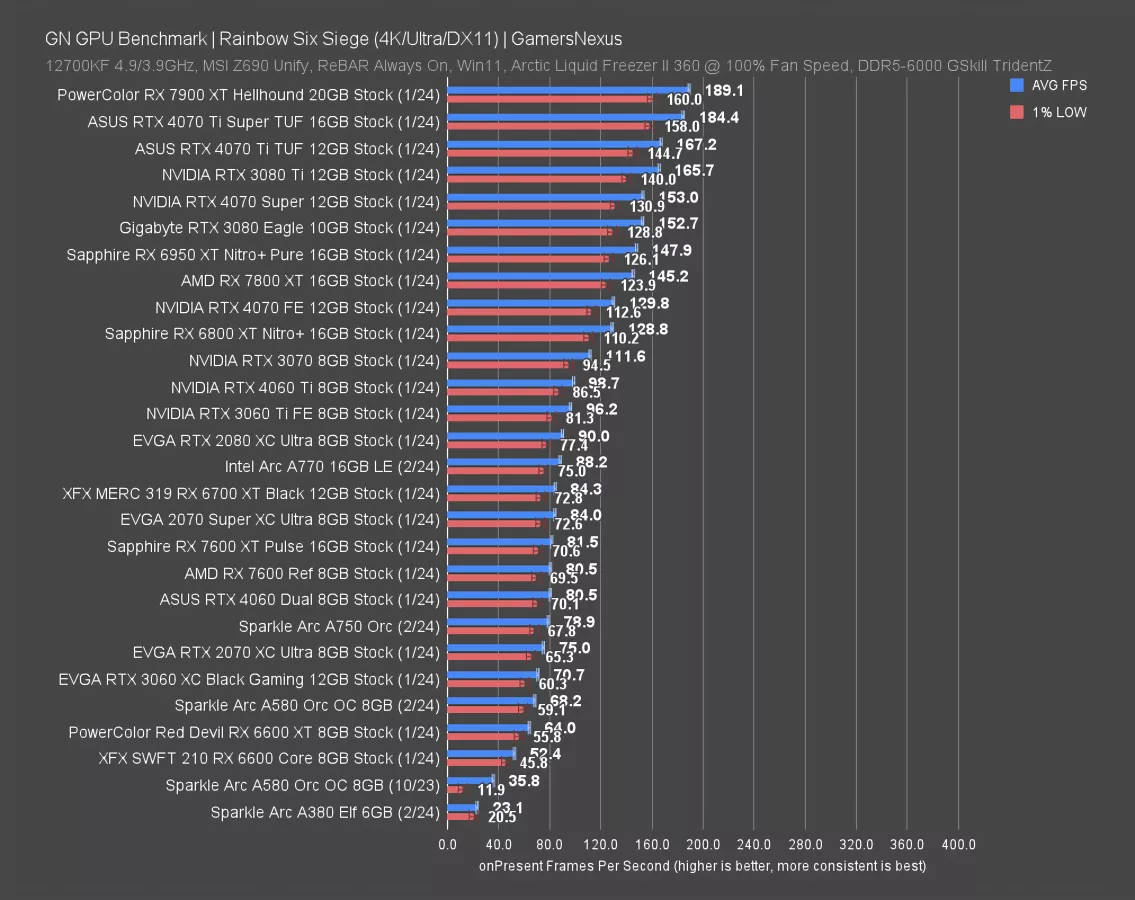
We’re next moving to Rainbow Six Siege. This game was the bane of Intel’s existence at launch, posting some of the worst performance we’d ever seen for this level of hardware. It was so bad that Rainbow Six was one of the first titles that Intel specifically targeted for improvements, prompting follow-up testing where we saw the parts begin to get better.
In today’s updated chart and first at 4K, the A750 runs at 79 FPS AVG and roughly ties both the RTX 4060 and RX 7600 in average, 1%, and 0.1% lows. Given that it’s cheaper than both, that’s another strong position -- especially with the frametime pacing now being fixed.
The A770 sits between the RX 6700 XT -- which itself outpaces the RX 7600 XT -- and the RTX 4060 Ti. The A770’s lead over the 7600 XT is 8%, with a lead of 10% over the 4060. The 4060 Ti leads the A770 by 12%.
Just for perspective, we have two A580 entries on this chart, which is intentional. Other cards haven’t changed nearly as much, indicating that Intel’s improvements largely come from its drivers, not the game itself, which has also updated. The old A580 result had it at 36FPS AVG with completely unplayable and highly inconsistent lows. The new drivers have brought that up to an impressive 68 FPS, or a 91% improvement. This shows how much power the drivers have when they’re not as mature as NVIDIA’s are. The lows have gone from broken to actually consistent. That pulls it ahead of the RX 6600.
1440p Benchmarks
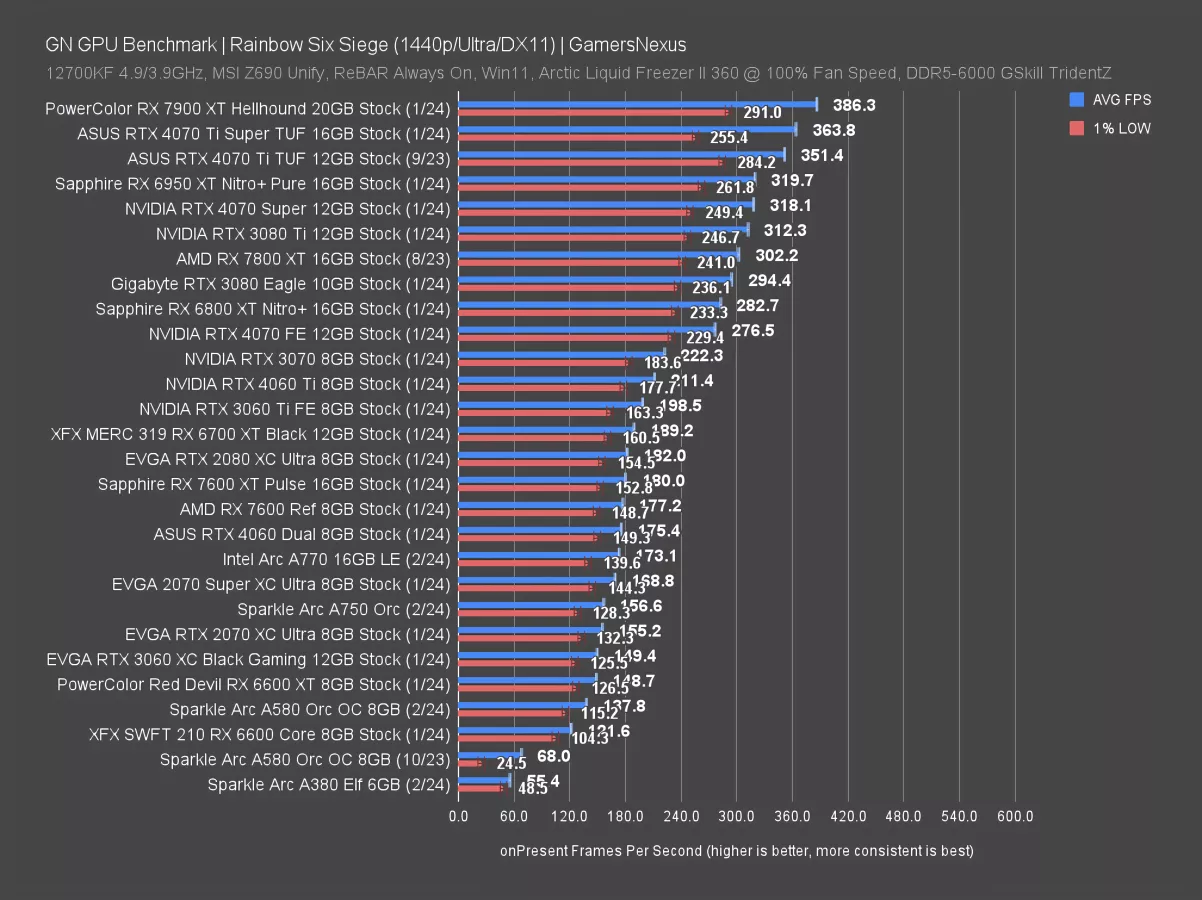
At 1440p, the Intel Arc cards fall in the ranks -- comparatively, they’re doing a lot better at 4K against competition. The A750 outperforms the RX 6600 XT by 5.3%, but the RX 7600 leads the A750 by 13%, up at 177 FPS AVG. The A770 also doesn’t scale as strongly here, roughly tying the RTX 4060 and falling behind the RX 7600.
1080p Benchmarks
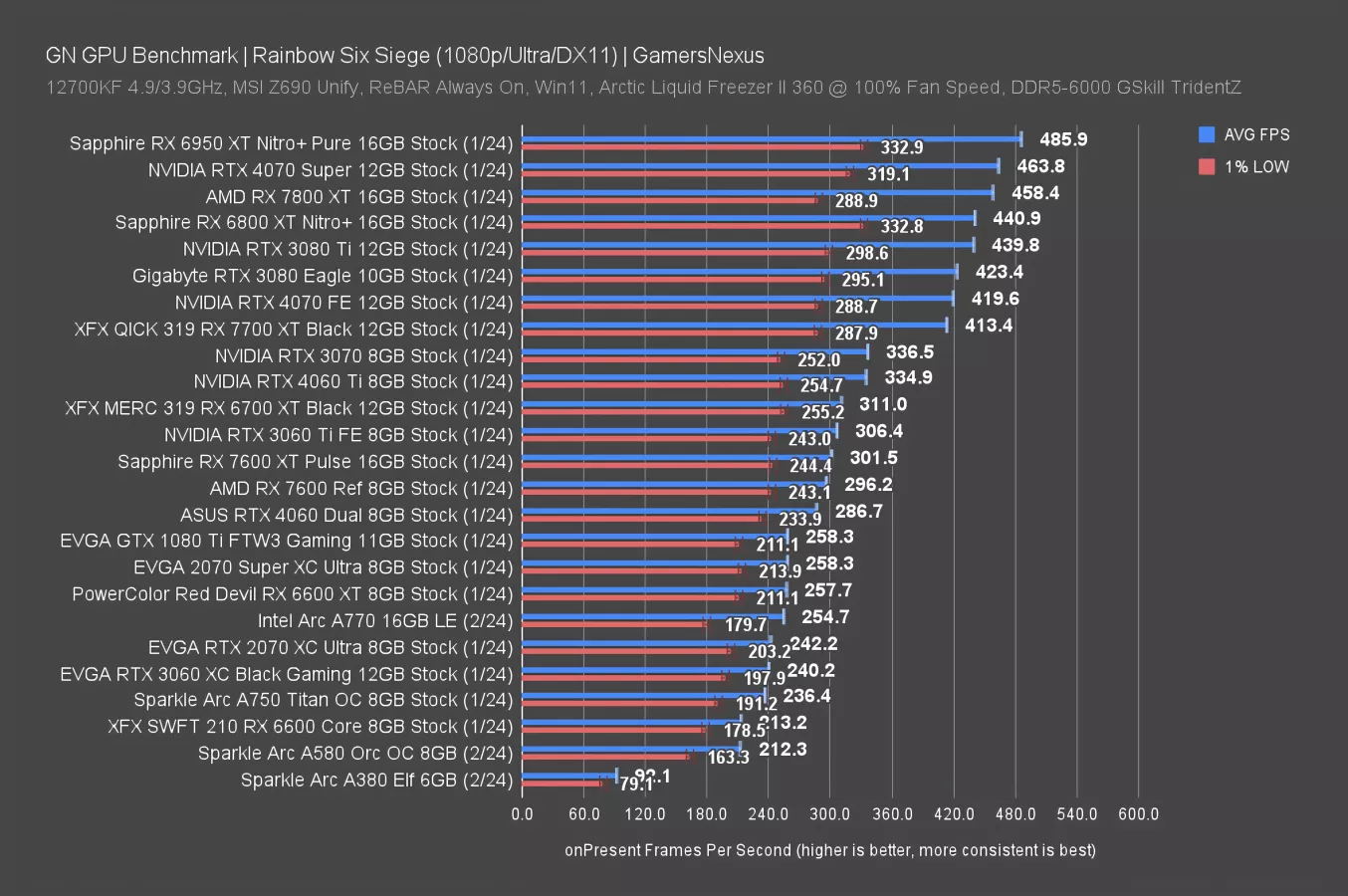
That odd behavior continues at 1080p, where Intel struggles to keep rank with its normal competition. The RX 7600 now leads the A750 by around 25%, a massive change. The A770 is also behind the RTX 4060 and RX 7600. At least they’re playable, but this does illustrate Arc’s weakness as being its general unpredictability at times.
Dying Light 2
1440p Benchmarks
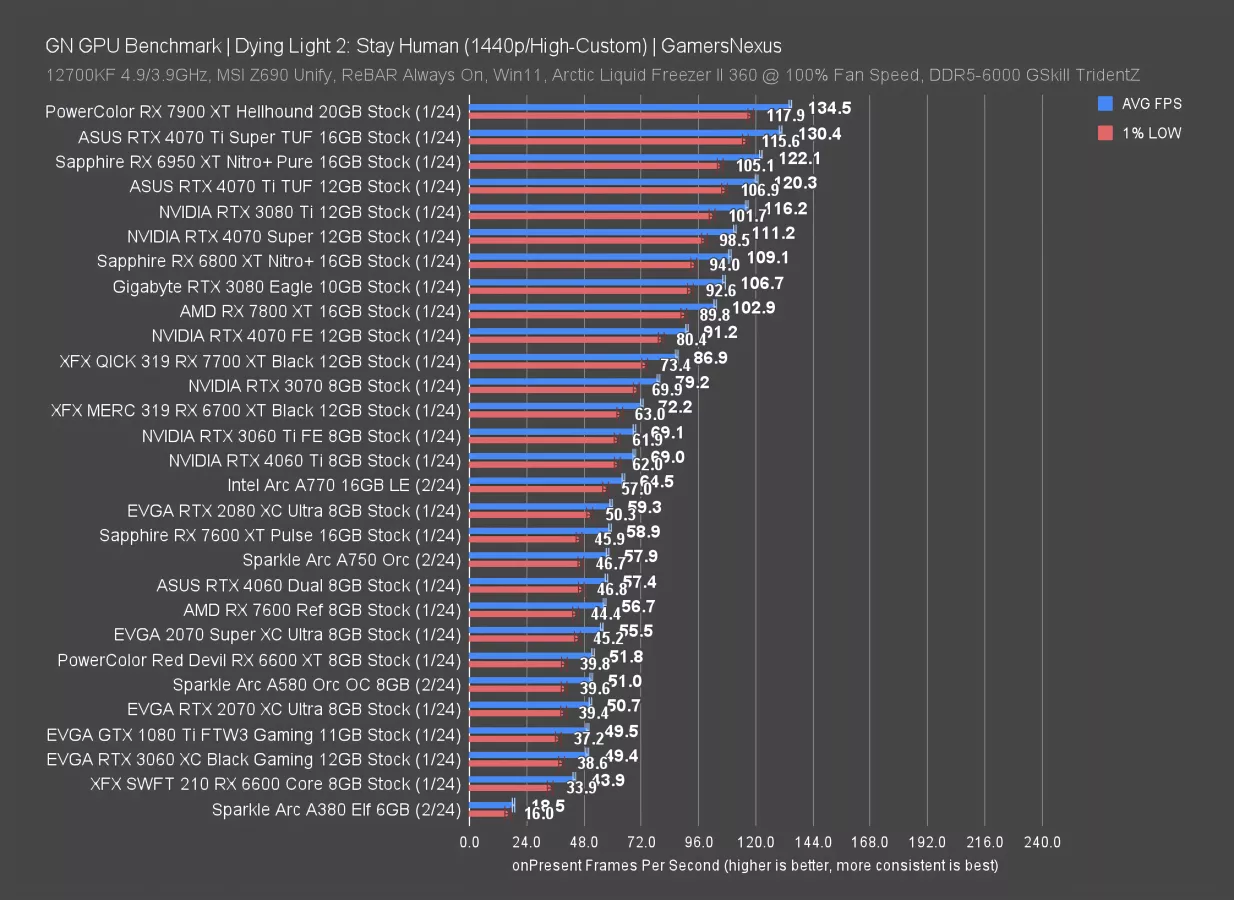
At 1440p, the $290 Arc A770 rivals the $400 4060 Ti, the latter of which has an advantage of only 7% despite a price increase of 38%. Against the 7600 XT, the A770 manages a lead not only in better pricing, but in outright performance, with a 10% advantage.
The A750 is roughly tied with the 7600 XT, 4060, and 7600, meaning the primary differentiating factor between these in Dying Light 2 is price. As for the A580, it’s competitive with the 6600 XT here, which is a good spot for it to be.
1080p Benchmarks
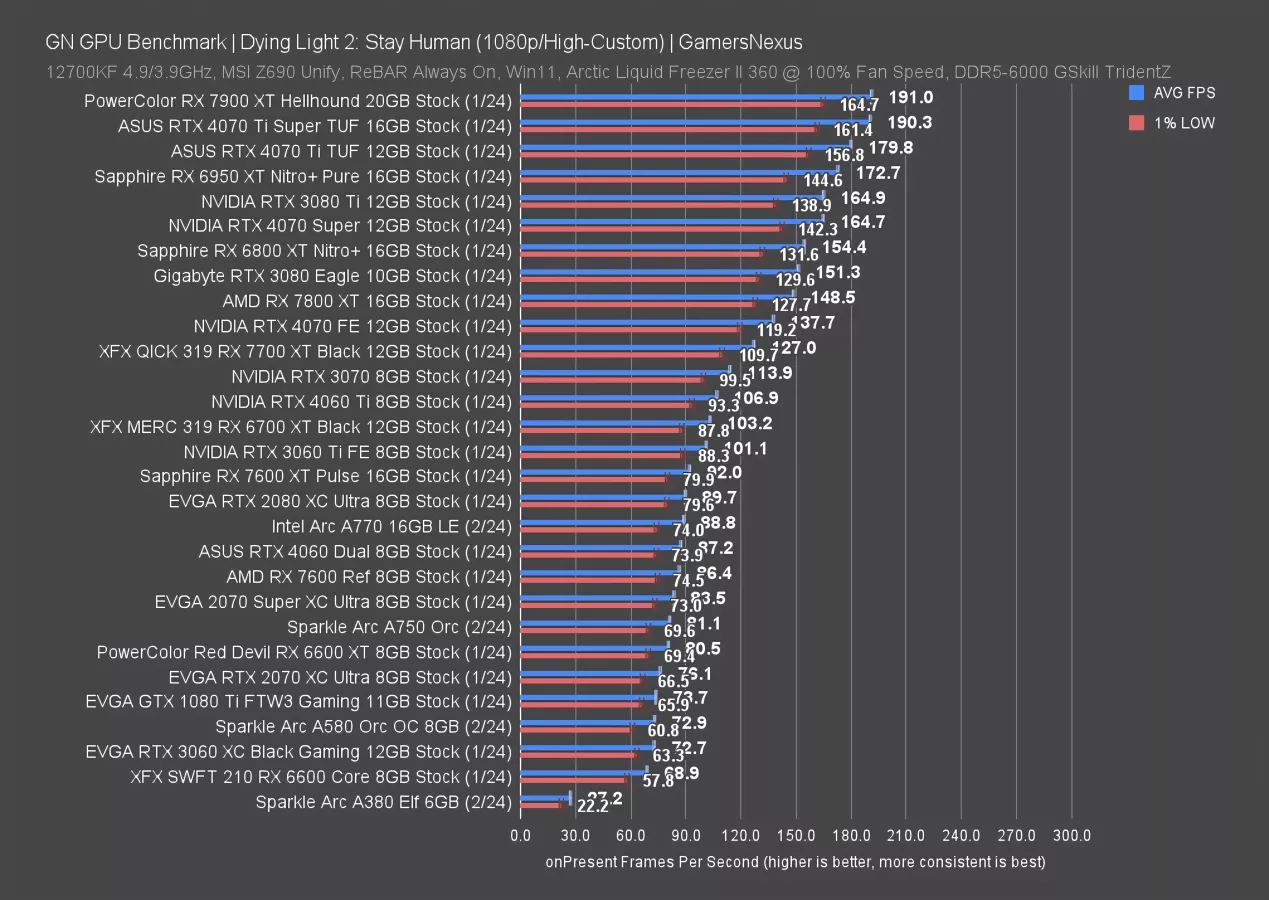
At 1080p, the 4060 climbs and equals the A770 GPU. The 7600 isn’t far behind. The A750 approaches the RX 7600 levels, but has clearly fallen somewhat from its higher resolution rankings.
FFXIV
4K Benchmarks
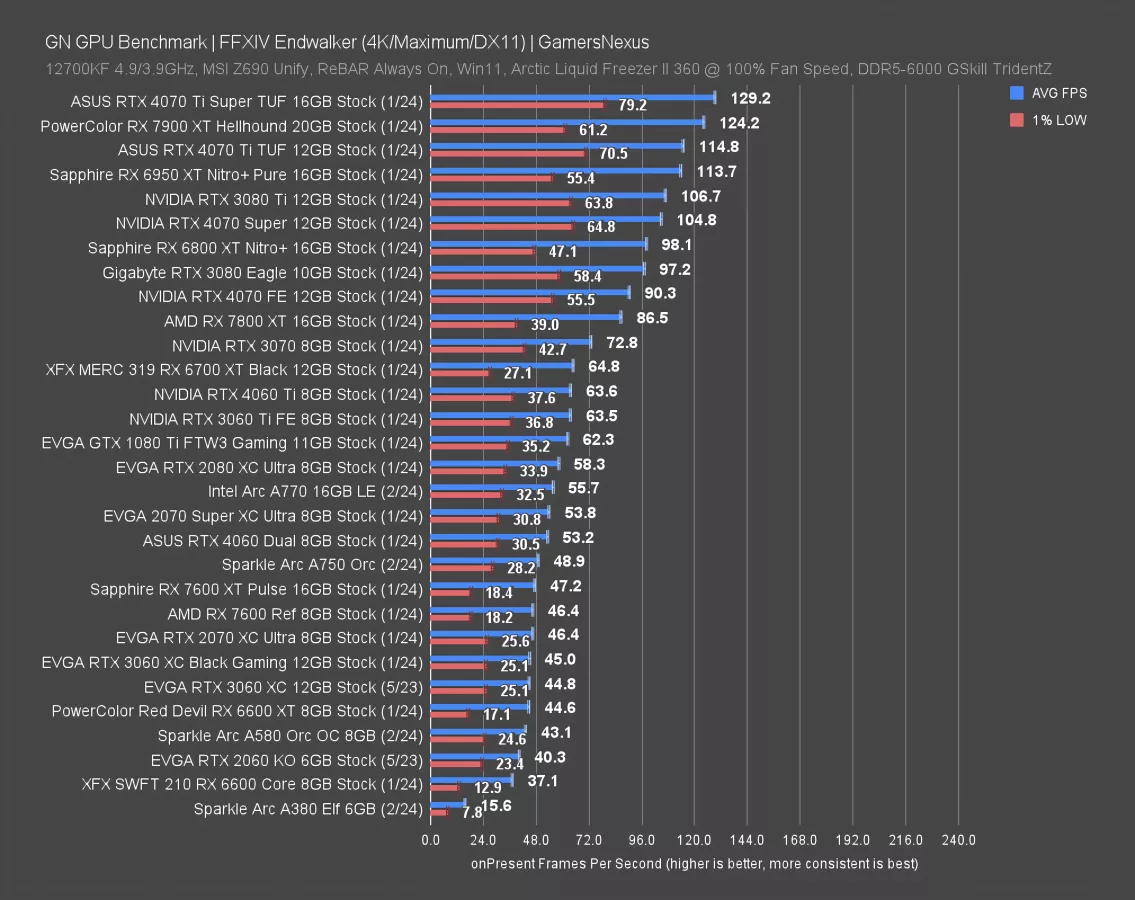
In Final Fantasy at 4K, the A770 runs at about 56 FPS AVG, which has it 5% ahead of the RTX 4060. The 4060 leads the A750 by 9%. AMD’s RX 7600 XT is about tied with the A750, doing it no favors in a price battle. Finally, the A580 is now about equal to a 6600 XT.
1440p Benchmarks
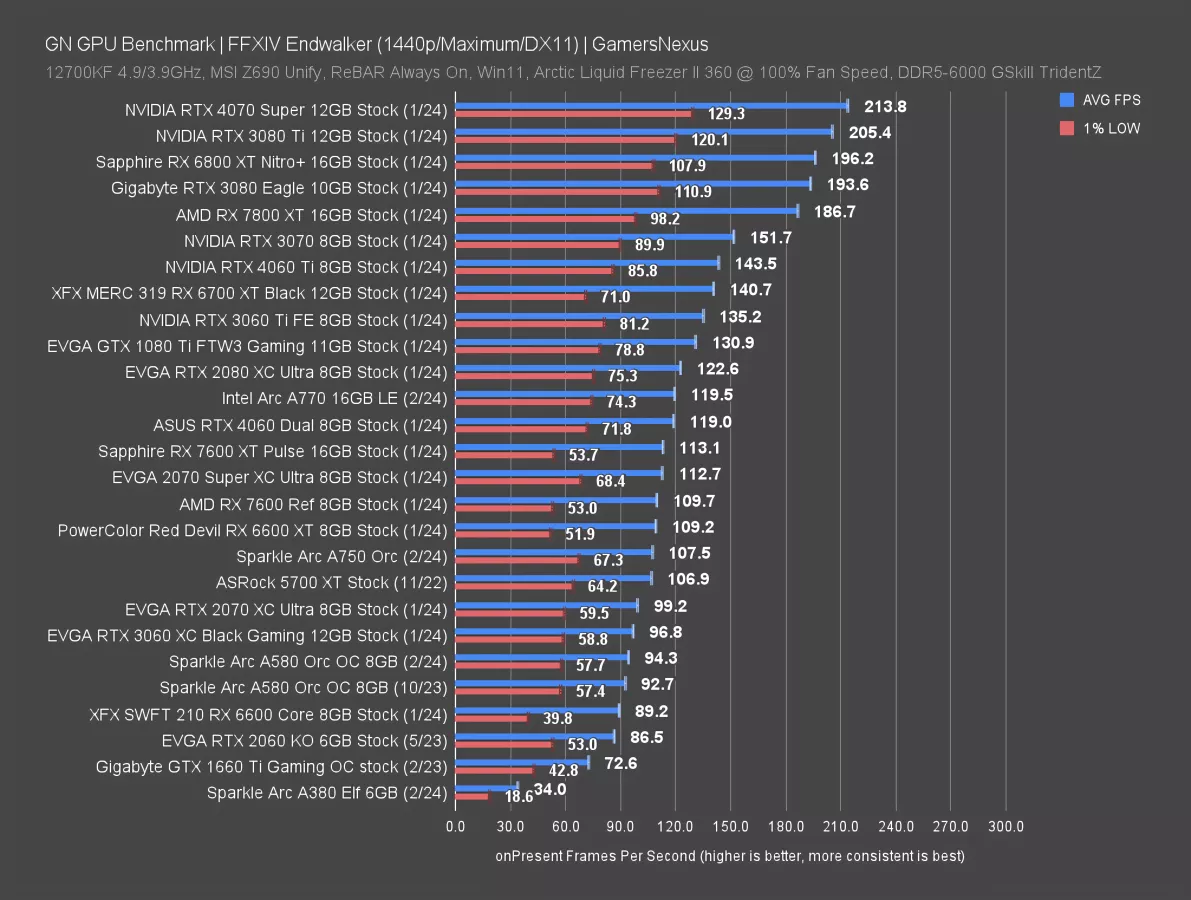
At 1440p, the A770 is tied with the 4060 in all metrics, leading the 7600 XT and 7600. The A750 is perceptibly equal to the 7600 from a user experience standpoint, although with technically better 1% lows, and the A580 is flanked by the 6600 and 3060 (watch our review). Intel is competing with its similarly classed parts. That’s all it needs to do.
1080p Benchmarks
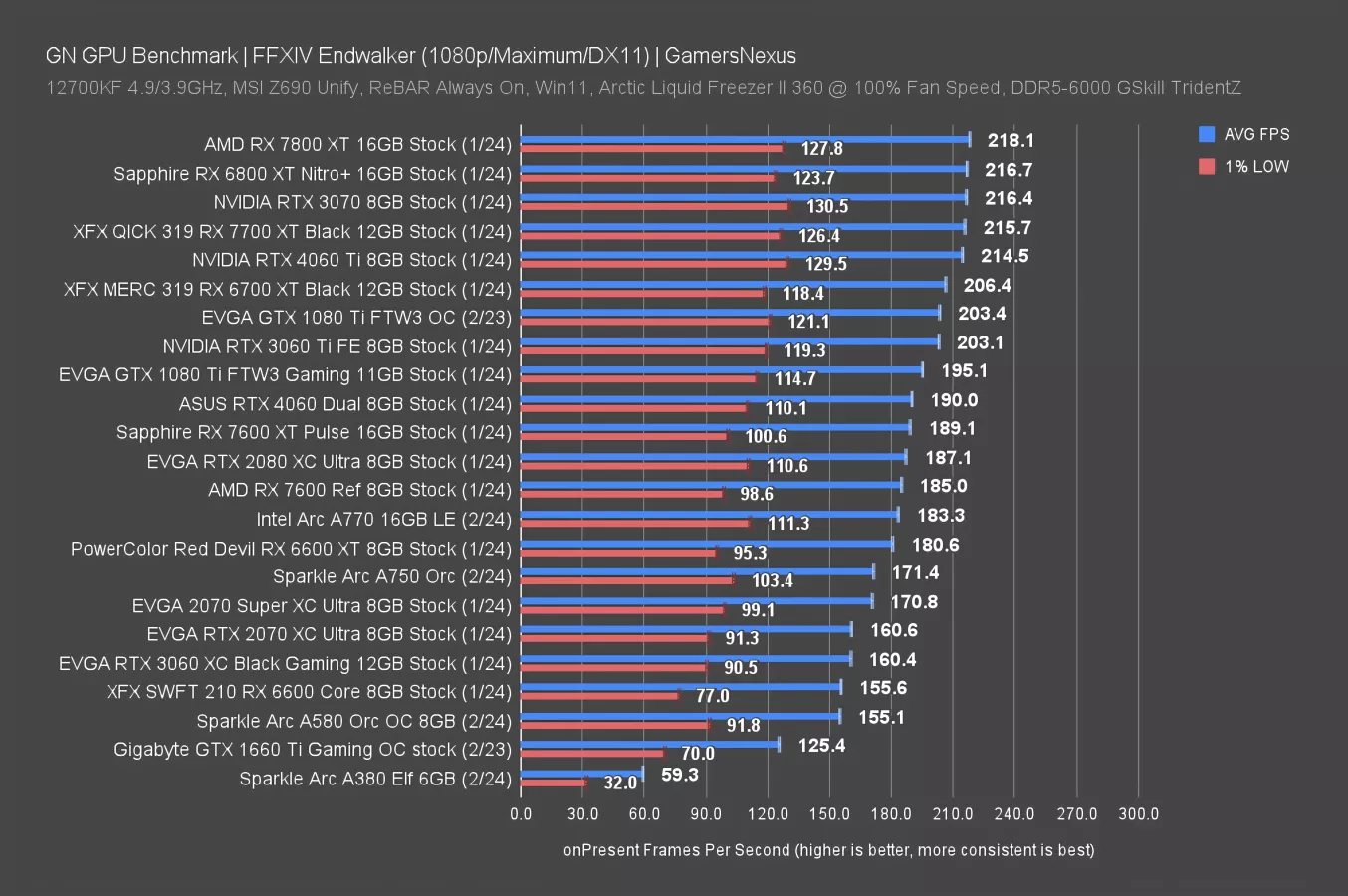
At 1080p, a wider gap forms again: This seems to be a trend between some games with Intel. The 4060 at 190 FPS AVG now leads the A770 by 3.7%. The A770 is about tied with the 7600 for AVG FPS now. Its only advantage in this chart is price.
In an absolute sense, the A580 and A380 are both playable here.
GTA V
4K Benchmarks
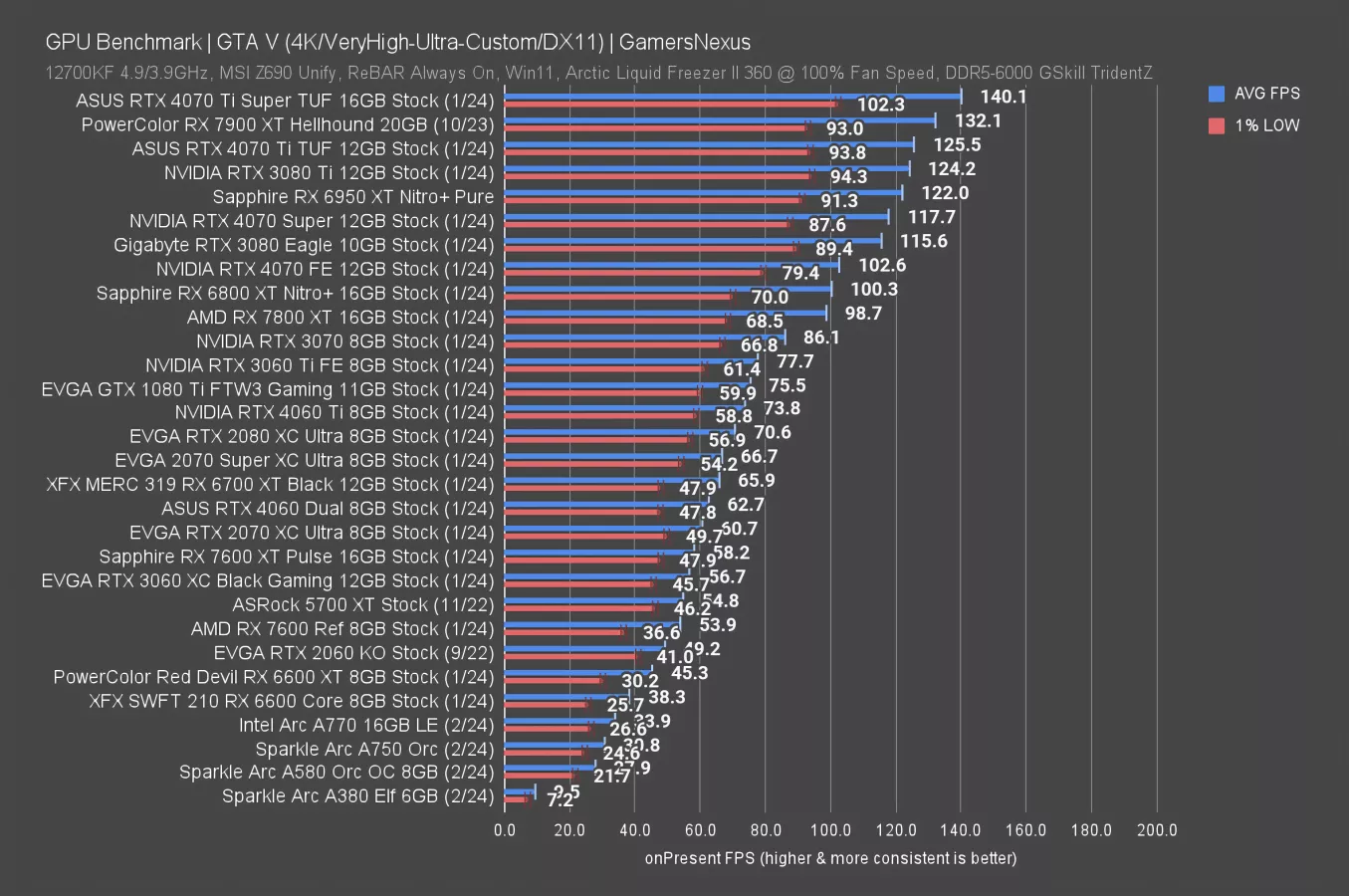
Unfortunately for Intel, it is sometimes just completely broken. GTA V appears to be one of those times. In this test, none of the Intel cards can get out of the 30 FPS range at these settings. Based on the previous charts, the A770 should at least be up around 50 FPS, if not closer to 60, but it’s just not doing it here.
Starfield
1080p Benchmarks
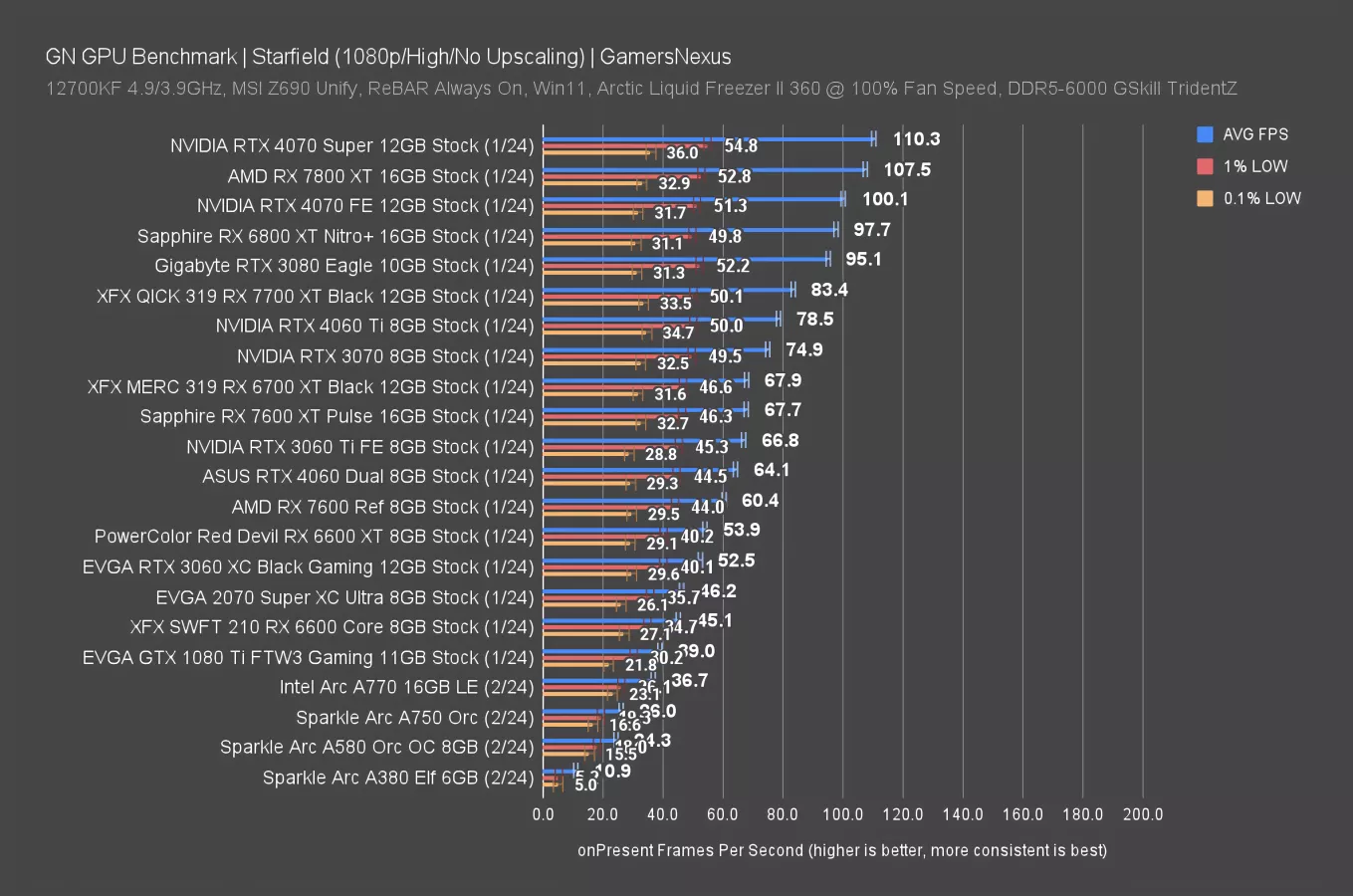
Starfield is another one that’s specifically broken, in a sense, on Arc -- and they know this. In fact, their latest driver was supposed to fix this -- but we aren’t seeing the fix. We tried with these drivers and the ones that predate them one revision, and both produced the same result.
Unfortunately for Arc, its performance mirrors that of GTA V’s in the prior test in that it is just clearly broken. It runs but the RTX 4060 has a framerate multiples faster, with the RX 7600 also boosted way beyond what we’ve seen in other games.
It’s instances like these that hurt Arc’s wide-reaching viability, and these are the only reasons we hesitate when answering whether or not someone should buy Arc.
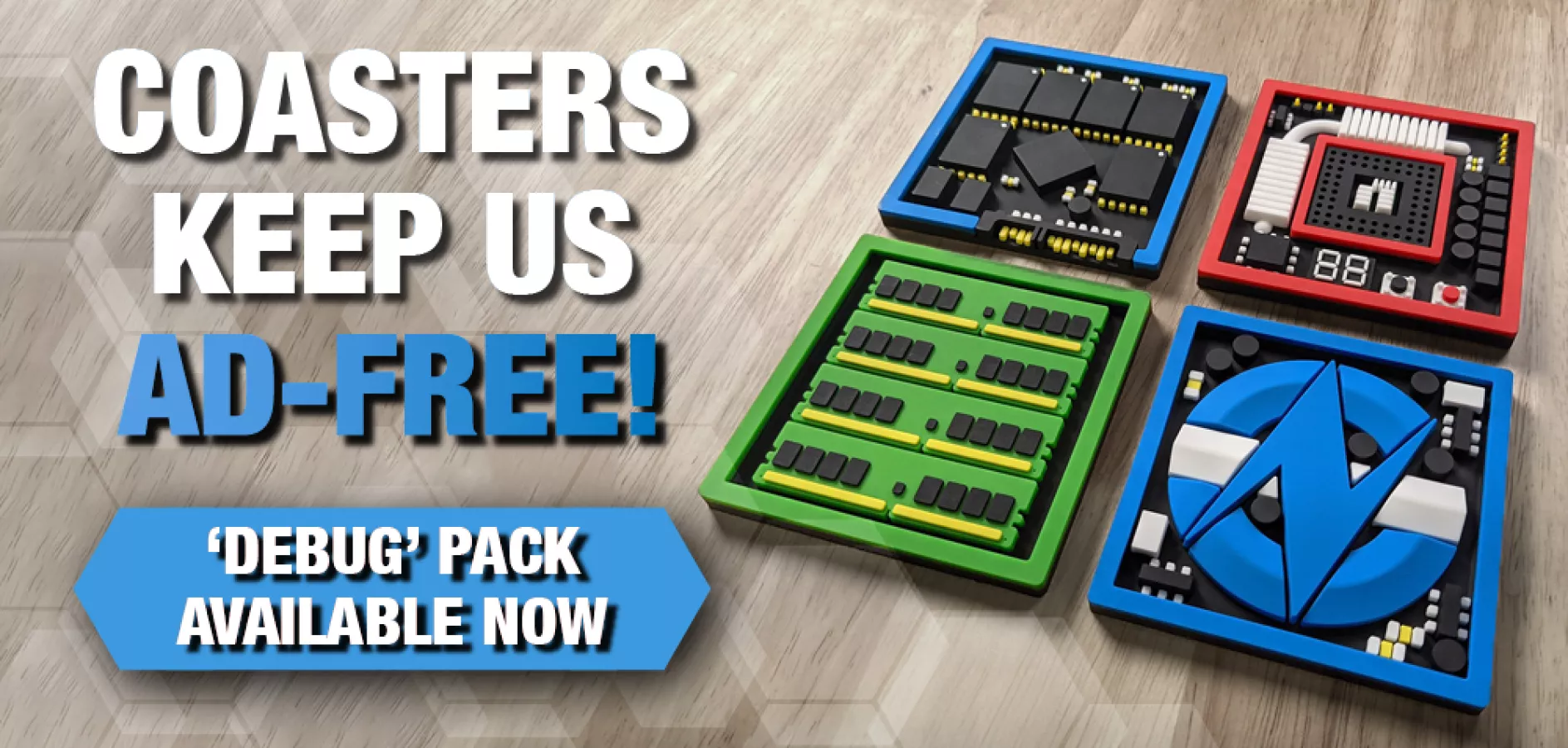
Intel Arc Ray Tracing Benchmarks
Our ray tracing tests are next. Some of these games are shared with the earlier ones for rasterized tests, but use different settings and aren’t directly comparable. As an interesting note, RT hardware is available even on the Arc A310. It won’t run well for most applications, but the hardware is there.
Cyberpunk Ray Tracing
1080p/Medium
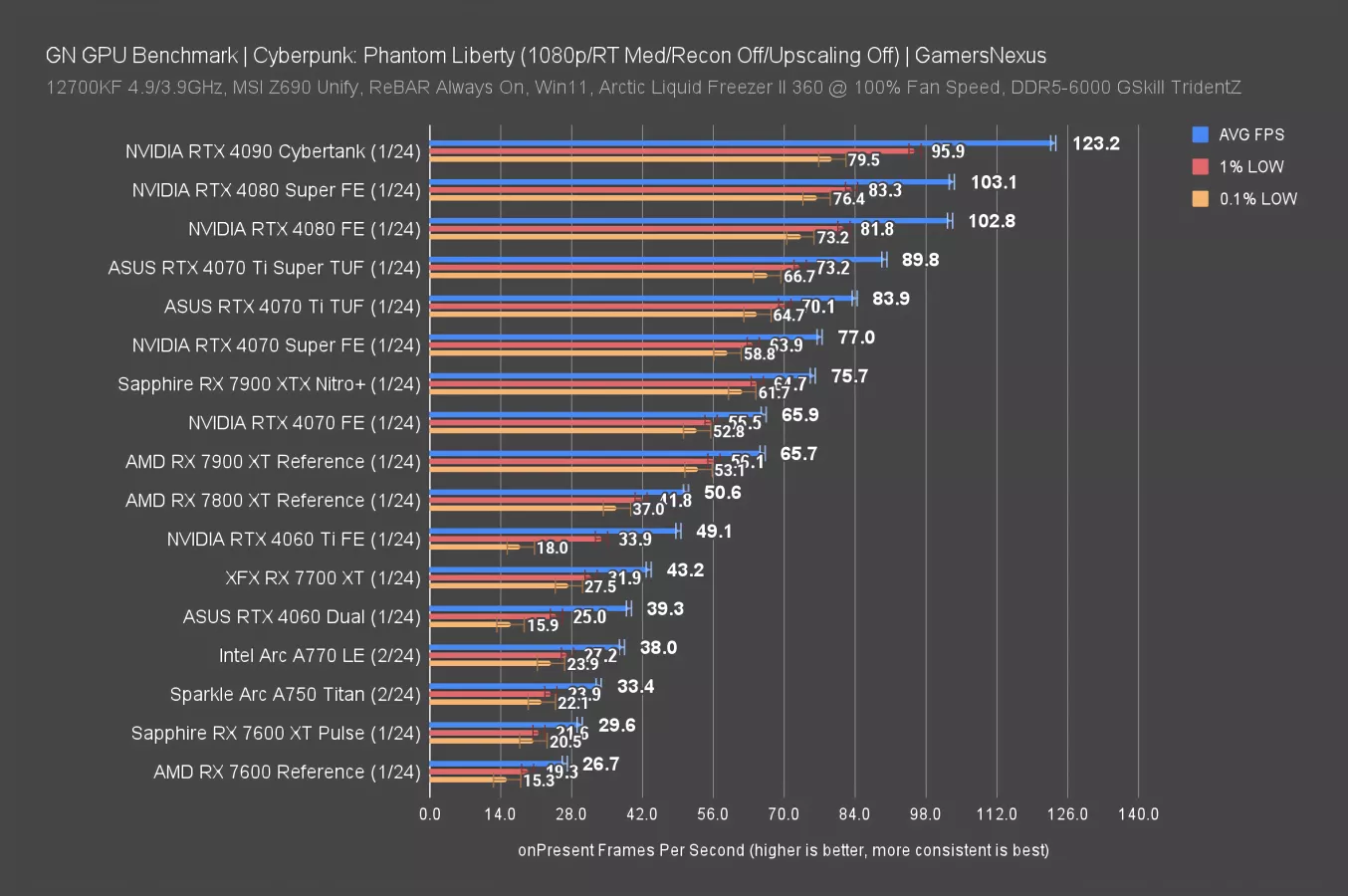
We’ll start with Cyberpunk and 1080p/Medium RT settings without upscaling. If you want to use upscaling to boost performance, go for it -- but for purposes of comparing two devices by relative performance, this is what we want.
In this test, the A770 ran at 38 FPS AVG and held strong lows that were proportional to the average. You’d want upscaling or reduced settings to get a more stable experience here, but again, our goals are to compare in the relative sense.
The RTX 4060 outperforms the A770 by 3.4%, putting Intel dangerously close to NVIDIA when considering NVIDIA’s general advantage in RT workloads. And in fact, the A770 has stronger 0.1% low performance that we’ll see in a frametime plot in a moment. The 4060 has more sporadic performance in frametime pacing with these settings than we’d typically see.
The A750 allowed the 4060 an 18% advantage, but still managed a significant lead over the RX 7600.
(RT) Cyberpunk Frametimes
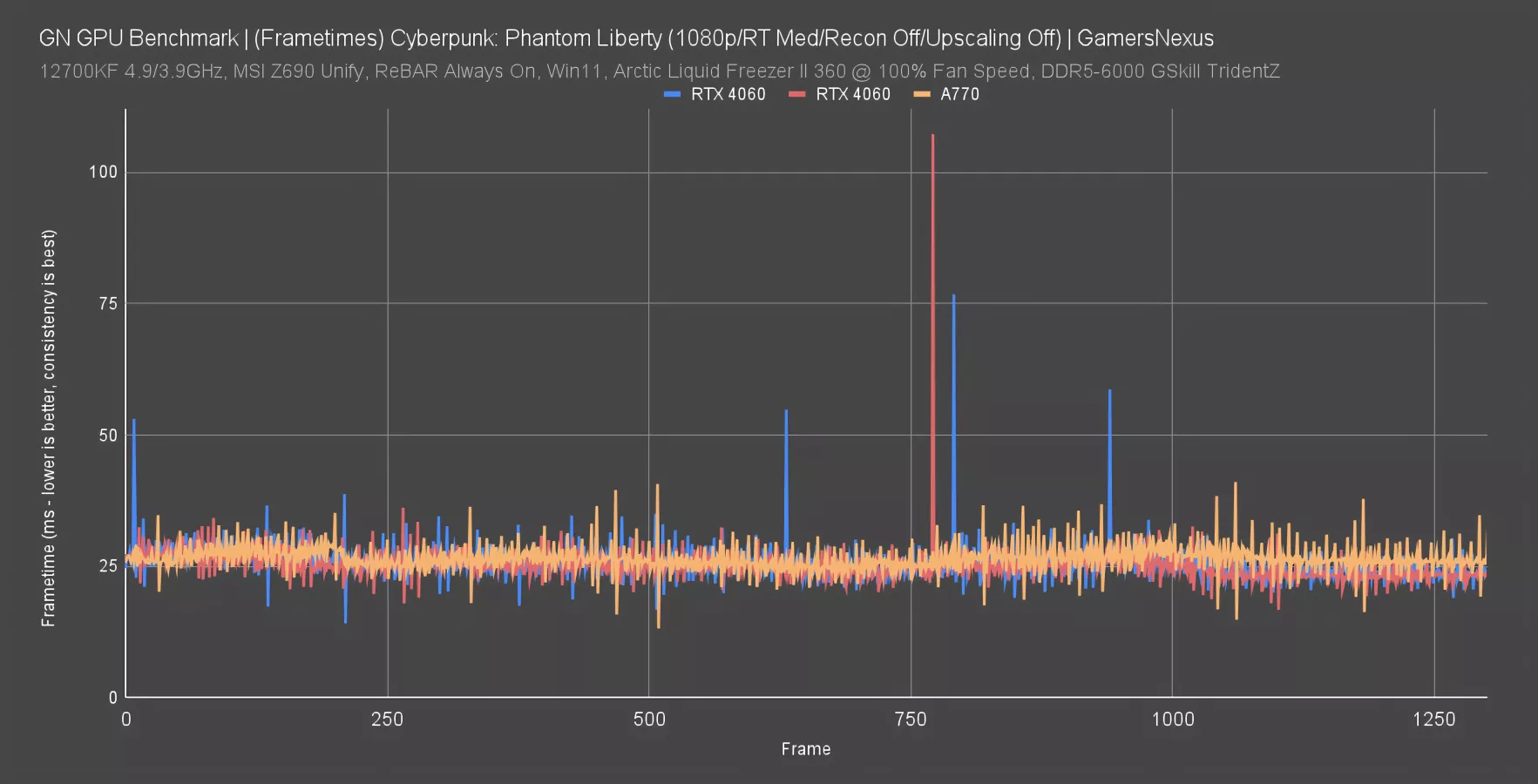
This frametime plot shows the raw frame-to-frame interval in milliseconds, or the time required to render a frame as presented in its base metric of time. We’re currently showing two passes of the RTX 4060. Here, you can see that one of the passes had several spikes higher than 50ms. The other pass has one bad spike to about 110ms, which is one tenth of a second that you’d be staring at the same frame, which is a pretty big spike.
The A770 is much more consistent and lacks any of these massive spikes. That’s how 0.1% lows are supposed to be used: They’re an indicator to point us toward a problem, and here, the problem is the 4060’s ability to consistently deliver well-timed frames.
1080p/Ultra
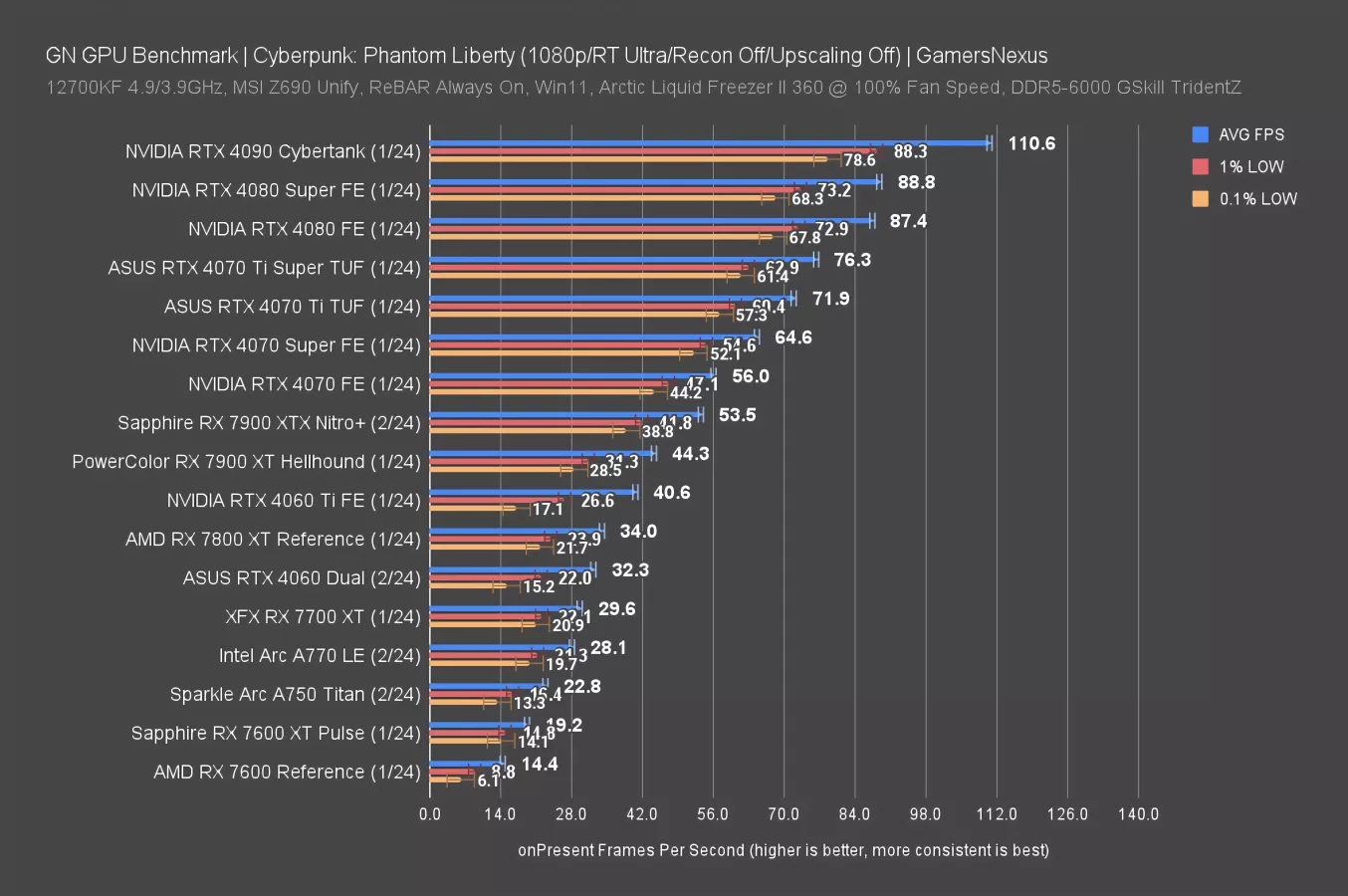
1080p/Ultra is where we see NVIDIA really pull ahead of AMD, with unbelievably large gaps that illustrate how higher RT loads will disproportionately benefit NVIDIA performance.
Despite being unplayable, the raw performance shows that Intel manages to keep up better than AMD. Price-for-price, Arc is impressive: A 28 FPS AVG result for the A770, still with relatively flat frametimes, has it close to an RX 7700 XT. That’s a $290 Intel card competing with a $420-$450 AMD card. The lead over the RX 7600 XT for the A770 is 46% here, with the A750 leading the RX 7600 by 58%. The A750 also manages to maintain more proportional frametimes than the RX 7600, which sees them diverge from the average more noticeably.
The RTX 4060 leads the A770 in a way that we’d still classify as “not even close,” but it’s not NVIDIA that Intel has to beat right now. It’s AMD.
As for why Intel does so well in Cyberpunk specifically, Intel’s Tom Petersen provided some engineering insight when we asked why. He said this, “In Cyberpunk, we see good results from the BVH cache since a large fraction of the time in that app with RT heavy workloads we are walking BVHs. It also is likely that the thread sorting unit is helping.”
The thread sorting unit is a physical piece of hardware of the GPU, while the BVH cache is an area where Intel has spent significant special optimization effort. We’ll talk more about these topics in the future.
Resident Evil 4 Ray Tracing
1080p Benchmarks
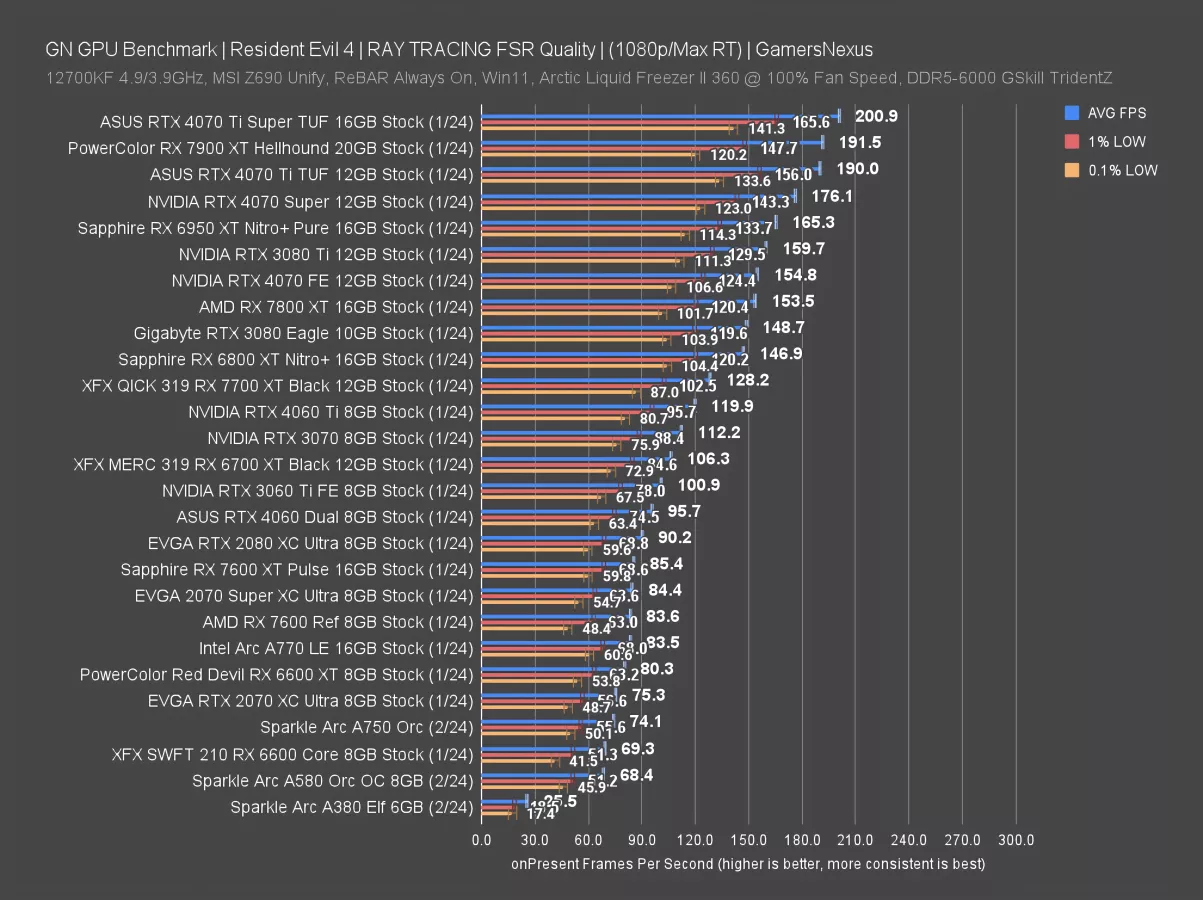
In Resident Evil 4 at 1080p and with RT, using quality FSR, the A770 landed at about 84 FPS AVG and tied the RX 7600 (although it maintained better frametime consistency in the 0.1% lows). The RTX 4060 leads the A770 by 14.6% here, with the A750 tying the RTX 2070. This game is a lighter RT workload, so AMD is able to recover its position in this particular title. We see similar behavior in Tomb Raider with RT, where only one RT feature is actually used.
1440p Benchmarks
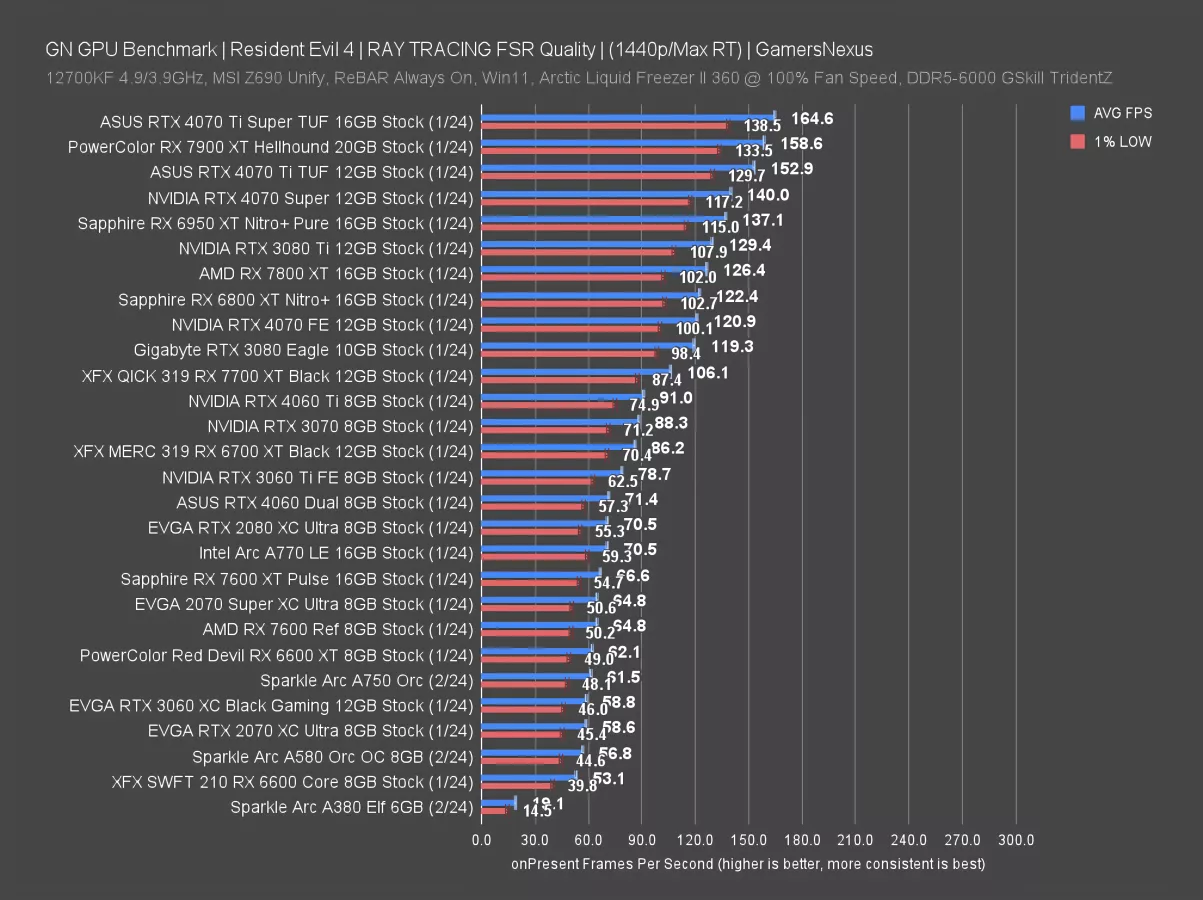
We’re including 1440p because it reinforces an earlier point: The A770 is able to gain ground on the RTX 4060 here, which has its lead reduced from 15% in the 1080p chart to just 1.3%. The resolution bump is hard for the 4060 and 4060 Ti cards to handle at scale.
Dying Light 2 Ray Tracing
1080p Benchmarks
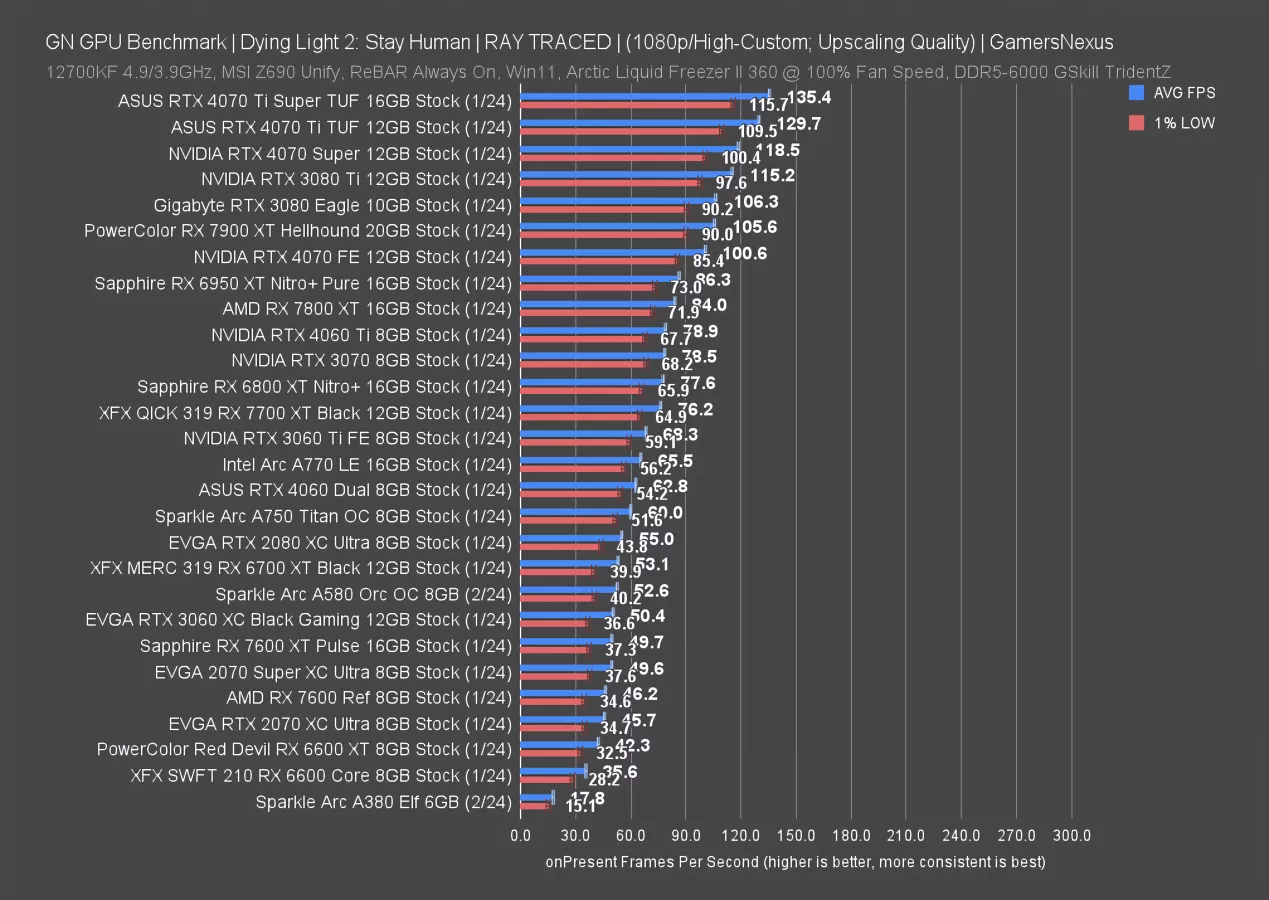
Dying Light 2 is significantly heavier as an RT workload than Resident Evil 4 and tends to have wider gaps between AMD and NVIDIA. At 1080p, the A770 ran at 66 FPS AVG and actually managed to technically outmatch the RTX 4060. The A750 follows, with the RX 7600 and its 46 FPS AVG just an afterthought. The A750’s lead over the 7600 is 30% here.
1440p Benchmarks
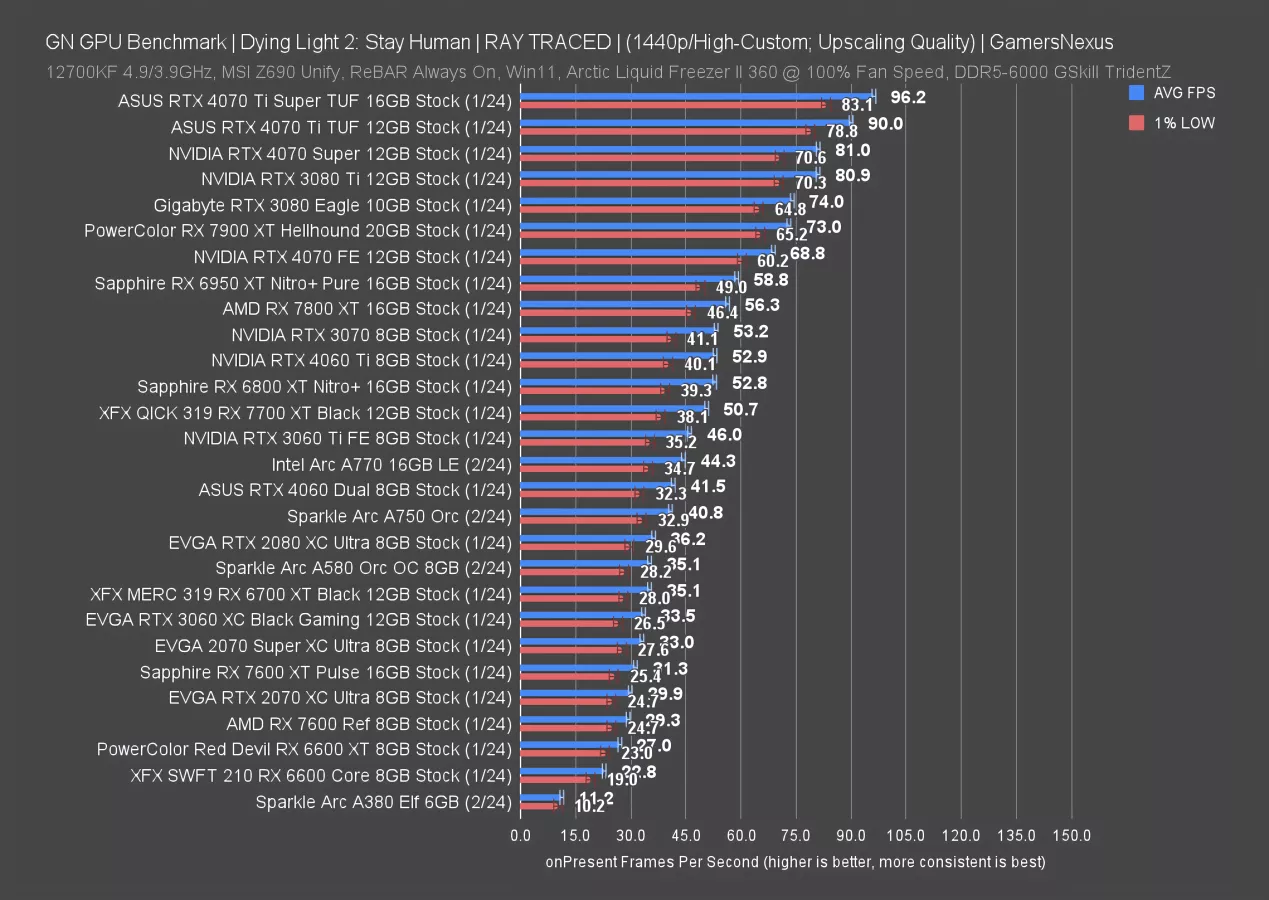
At 1440p, the A770 is slightly ahead of the RTX 4060 again, with the A750 just behind. AMD’s RX 7600 series cards are dragging behind here.
Conclusion
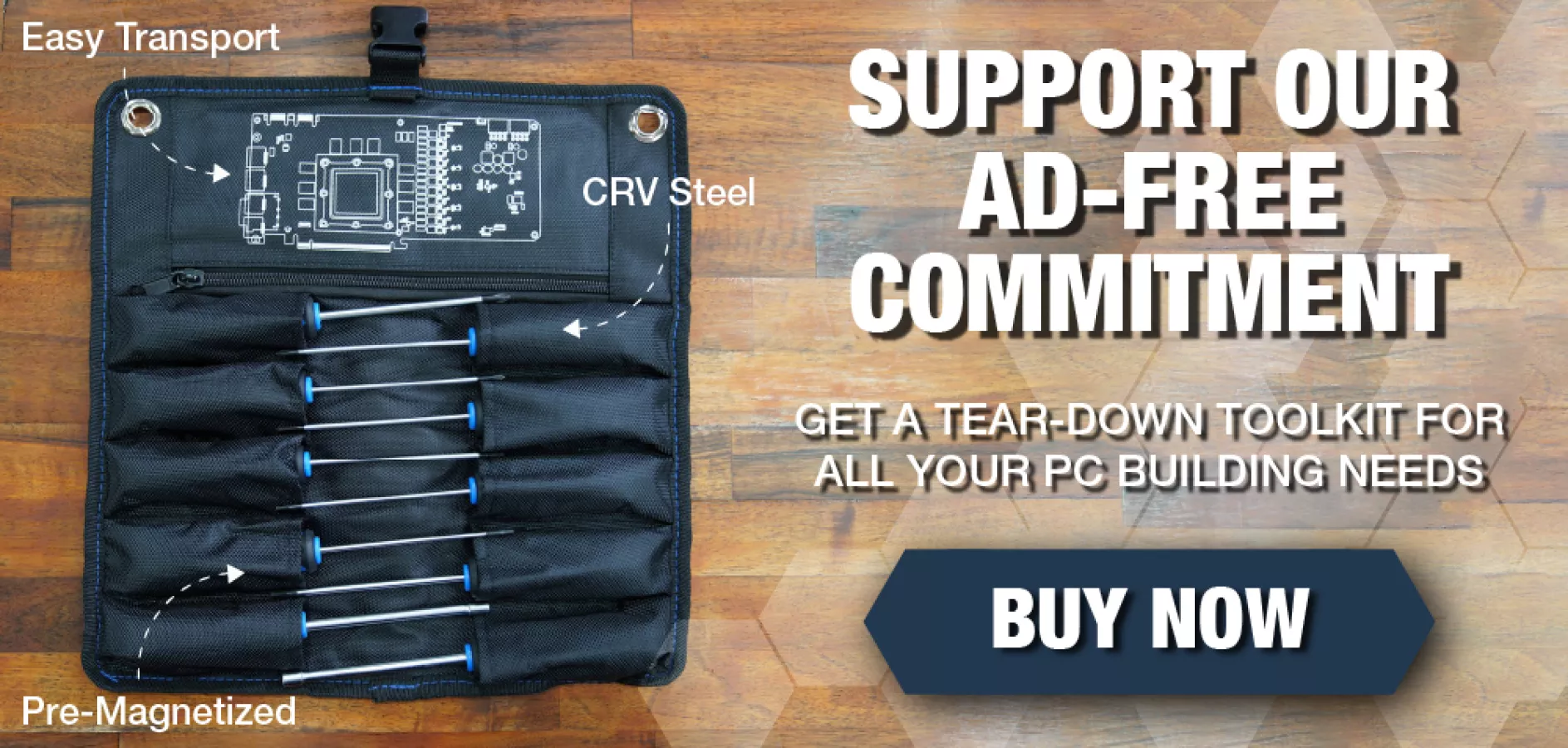
As usual, we have plenty more data, but that recaps the trends we see in all our other tests. You can find some additional data in our recent GPU reviews that also featured some Arc benchmarks.
Outside of gaming, Intel still has some challenges with idle power consumption and is less efficient than NVIDIA frame-for-frame, but when competing on price, AMD has historically shown that power efficiency is a secondary consideration. There has to be a trade-off somewhere. To us, as long as the power isn’t completely outrageous, getting strong gaming performance is a more important foundation when at this price class. Intel can’t fight battles on all fronts.
We’ve also separately deep-dived into Intel’s Arc drivers and software suite as recently as just a couple months ago, when we did a one-year revisit.
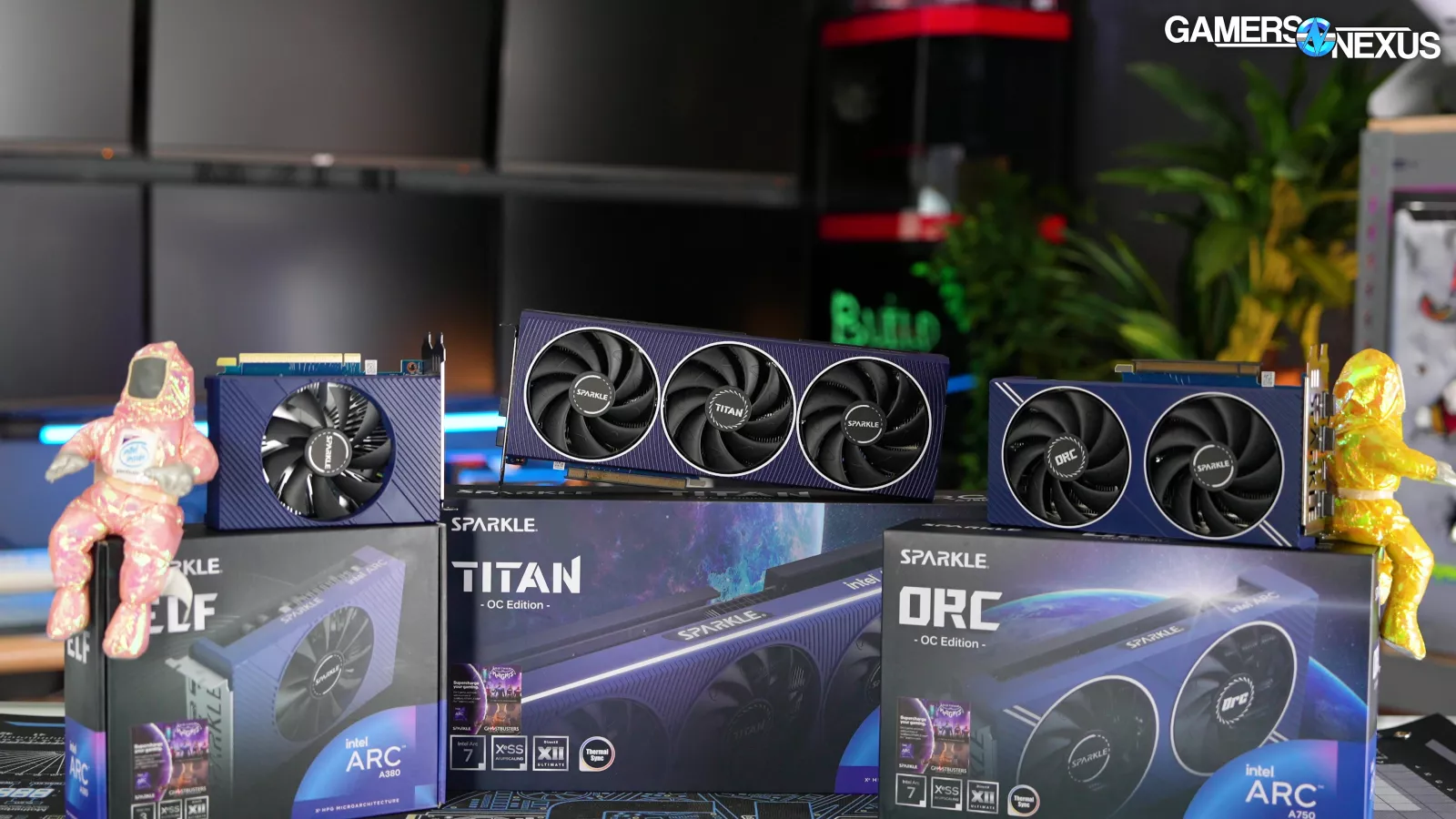
As for conclusions, they’re simple: When Intel Arc works, it works exceptionally well for the price class that it’s in. This is a stark change from initial launch when several games just simply didn’t launch or stuttered in unplayable ways. Intel has made remarkable improvements in its drivers.
It seems Arc is still somewhat binary, despite its strong performance: It either works, in which case it is a scary competitor for AMD more than for NVIDIA, or it’s functionally broken and stuck at 30 FPS. In this round of tests though, the amount of times that it was broken is far lower than we’ve seen in the revisits over the past year. We’re at two titles for this test: GTA V and Starfield. Now, we tested 14 games total when including unpublished tests, so 2 of 14 still isn’t a great percentage -- but both are on ancient engines, so maybe there’s a link there. We do think that Intel remains in the class of buyers where it should probably be someone with enthusiast-level knowledge; however, it’s slowly exiting that class and becoming something that can be recommended at more of a mainstream level.
That’s good news for Intel.
If you can categorize a user between “enthusiast” and “mainstream” -- and maybe that categorization is just called “patient” -- then Intel Arc can now be recommended to such a group.
As for ray tracing, Intel is competitive with AMD and is outclassing it in many scenarios. NVIDIA still holds significant advantages in overwhelmingly RT-heavy titles like Cyberpunk, but once again, when it works, Intel is competing in sometimes stronger ways than AMD.
For value, the A750 has held strong recommendations when it has occasionally dropped to $180, but even at $210, we think it makes sense to buy now. It is starting to clear those hurdles.
We’d still advise against recommending it to anyone who is more sensitive to issues with specific games in one-off cases, or to fully mainstream users who are incapable of troubleshooting on their own, but we do think this is beginning to find stability outside of the enthusiast market. For a lot of our audience, if you’re spending $200, it makes sense to seriously consider now.
The A770 is also posting better value now that its price has fallen below $300, and certainly it puts some pressure on the 4060 and 7600 XT.
We still want to be very clear, though: Arc will have frustrating moments for specific games. Whether or not those apply to you may just be chance, but it is improving.
As a result of the improvement, we’re actively working on some PC build guides with Arc GPUs. We’ll follow those up with some NVIDIA and AMD builds as well, as we’re planning to revive our PC building guides that built our website its hardware foundation back in 2010. Check back for that.
